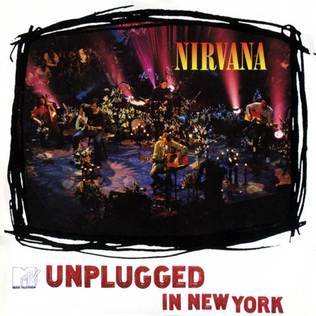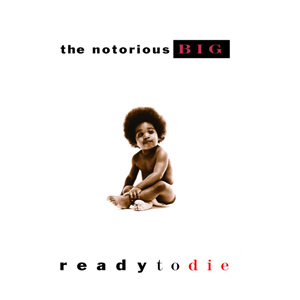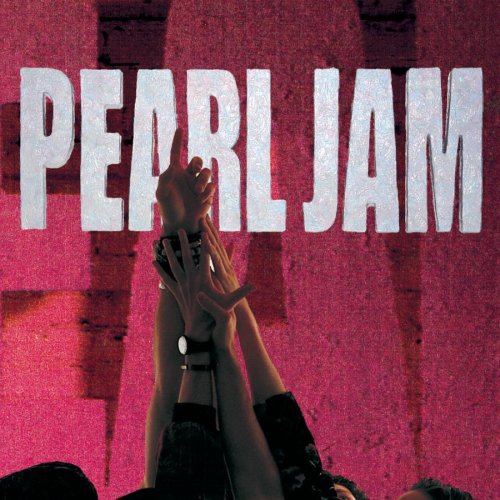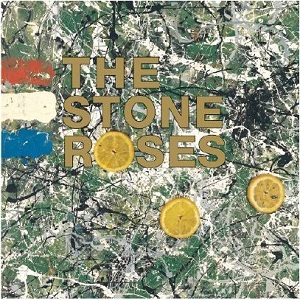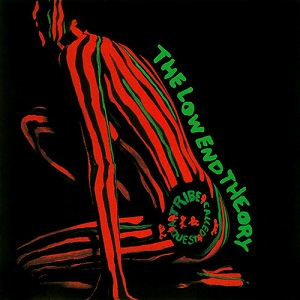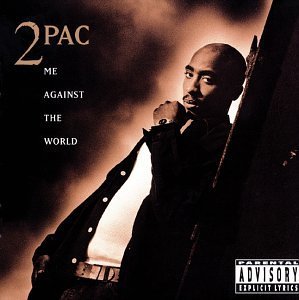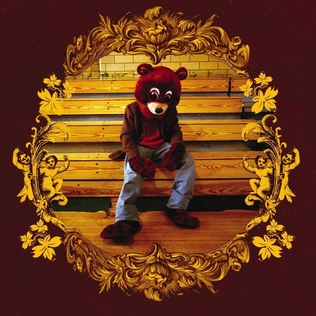Here are the 200 essential albums of rock and roll's first 50 years, arranged by era. I define this period as running roughly from Elvis Presley's first record in 1954 to Arcade Fire's debut album in 2004. Together, they bookend the canon of the basic modern rock and roll library.
I tried to make the list a condensed amalgamation of Rolling Stone's 200 Essential Albums (1997) and Rolling Stone's 500 Greatest Albums Of All-Time (2003), crossed with the spirit of Time's All-TIME 100 Albums (2006) and a dash of the VH1's 100 Greatest Albums Of All-Time (2001).
A few things worth noting to help keep the list focused and streamlined:
- There is only rock music. Early influences (such as Robert Johnson, Hank Williams, or Billie Holiday) and contemporary influences of other genres (like Miles Davis, Muddy Waters, or Johnny Cash) were all left out.
- I went by the classic titles. As a purist, I included the long-held classics of the genre (such as Elvis Presley's The Sun Sessions and The Beach Boys' Endless Summer) even if they were long out-of-print; in such cases, I included a footnote to a modern substitution that is its closest in-print equivalent.
- I tried to avoid multi-disc and/or multi-artist compilations whenever possible. That said, I relented in a few cases where a set was itself a definitive classic of an artist's career (James Brown's Star Time), covered an era that otherwise would have been missed (Motown Classics: Gold), or both (Phil Spector's Back To Mono).
- Finally, artists are represented in the era by which they are most associated—and not necessarily the era in which their albums were released. After each album title is the label upon which it was released followed by the date the album came out. If the album is a compilation that covers several years, the spanning years are written before the release date.
Like anything else, the rest ultimately came down to my own judgment. The whole process was obsessive, agonizing, and conflicted—but hey, that's half the fun.
So here is the canon of rock and roll music—the rock, as it were, upon which rock and roll rests.
The 1950s.
Chuck Berry: The Great Twenty-Eight*
(MCA, 1955-1965/1982)
Ray Charles: The Birth Of Soul
(Atlantic, 1951-1959/1991)
Ray Charles: Modern Sounds In Country And Western Music
(ABC, 1962)
The Coasters: The Very Best Of
(Rhino, 1954-1961/1994)
 The clown princes of rock and roll who turned Leiber & Stoller's two-minute comic operettas into masterpieces that deftly walked the line between novelty, rock, and doo-wop in hits like "Charlie Brown," "Along Came Jones," and their masterpiece, "Yakety Yak."
The clown princes of rock and roll who turned Leiber & Stoller's two-minute comic operettas into masterpieces that deftly walked the line between novelty, rock, and doo-wop in hits like "Charlie Brown," "Along Came Jones," and their masterpiece, "Yakety Yak."
(Rhino, 1954-1961/1994)
 The clown princes of rock and roll who turned Leiber & Stoller's two-minute comic operettas into masterpieces that deftly walked the line between novelty, rock, and doo-wop in hits like "Charlie Brown," "Along Came Jones," and their masterpiece, "Yakety Yak."
The clown princes of rock and roll who turned Leiber & Stoller's two-minute comic operettas into masterpieces that deftly walked the line between novelty, rock, and doo-wop in hits like "Charlie Brown," "Along Came Jones," and their masterpiece, "Yakety Yak."
Sam Cooke: Portrait of A Legend
(ABKCO, 1951-1964/2003)
Bo Diddley: Bo Diddley*
(Chess, 1955-1958/1958)
Fats Domino: My Blue Heaven: The Best Of*
(EMI, 1949-1961/1990)
The Everly Brothers: Cadence Classics: Their 20 Greatest Hits
(Rhino, 1957-1960/1990)
Buddy Holly: 20 Golden Greats*
(EMI, 1956-1958/1978)
Jerry Lee Lewis: Original Golden Hits, Vol. 1 & 2*
(Collectables, 1956-1962/1999)
Little Richard: Here's Little Richard*
(Specialty, 1955-1956/1957)
Elvis Presley: The Sun Sessions*
(RCA, 1954-1955/1976)
Elvis Presley: Elvis Presley
(RCA, 1956)
From the opening count-off of "Blue Suede Shoes" through to the final cadence of "Money Honey," rock music's first masterpiece, crafted by its first legend; a mix of rock, pop, country, and R&B that was a stone-cold instant classic, down to its iconic (and much-imitated) cover.
Elvis Presley: Elvis' Golden Records*
(RCA, 1956)
From the opening count-off of "Blue Suede Shoes" through to the final cadence of "Money Honey," rock music's first masterpiece, crafted by its first legend; a mix of rock, pop, country, and R&B that was a stone-cold instant classic, down to its iconic (and much-imitated) cover.
Elvis Presley: Elvis' Golden Records*
(RCA, 1956-1957/1957)
Street Corner Serenade: Greatest Doo-Wop Hits of the '50s & '60s [V/A]
The 1960s.
The Animals: The Best Of
(Abkco, 1964-1965/1987)
 The hardest of England's R&B groups, they took dire blues and spun it convincingly ("House Of The Rising Sun," "Boom Boom"), before turning the brooding inward ("Don't Let Me Be Misunderstood") and then out ("We Gotta Get Outta This Place," "It's My Life").
The hardest of England's R&B groups, they took dire blues and spun it convincingly ("House Of The Rising Sun," "Boom Boom"), before turning the brooding inward ("Don't Let Me Be Misunderstood") and then out ("We Gotta Get Outta This Place," "It's My Life").The Band: The Band
(Capitol, 1969)
The Beach Boys: Endless Summer**
(Capitol, 1962-1966/1974)
The Beach Boys: Pet Sounds
(Capitol, 1966)
The Beatles: 20 Greatest Hits**
(Capitol, 1962-1970/1982)
The Beatles: Rubber Soul
(Parlophone, 1965)
The Beatles: Revolver
(Parlophone, 1966)
The Beatles: Sgt. Pepper's Lonely Hearts Club Band
(Parlophone, 1967)
The Beatles: The Beatles ["The White Album"]
(Apple, 1968)
 The splintering of the 1960s captured across two LPs that documented both a fine working rock band ("Back In The USSR," "While My Guitar Gently Weeps," "Happiness Is A Warm Gun") and previewed the solo work to come ("Blackbird," "Yer Blues").
The splintering of the 1960s captured across two LPs that documented both a fine working rock band ("Back In The USSR," "While My Guitar Gently Weeps," "Happiness Is A Warm Gun") and previewed the solo work to come ("Blackbird," "Yer Blues").The Beatles: Abbey Road
(Apple, 1970)
The Best Of The Girl Groups, Vol. 1 [V/A]
(Rhino, 1960-1965/1990)
 When The Shirelles became the first all-girl group to have a #1 pop hit with "Will You Love Me Tomorrow," it launched a small revolution that was equal parts tough (The Shangri-Las' "Leader Of The Pack") and sweet (The Dixie Cups' "Chapel Of Love").
When The Shirelles became the first all-girl group to have a #1 pop hit with "Will You Love Me Tomorrow," it launched a small revolution that was equal parts tough (The Shangri-Las' "Leader Of The Pack") and sweet (The Dixie Cups' "Chapel Of Love").James Brown: Live At The Apollo
(King, 1963)
James Brown: Star Time
(Polydor, 1956-1984/1991)
Buffalo Springfield: Again
(Atco, 1967)
 The masterpiece of this all-too-brief, supergroup-in-hindsight's career, split between Stephen Stills' AM pop ("Rock And Roll Woman," "Bluebird") and Neil Young's raw rockers ("Mr. Soul") and ballads ("Expecting To Fly"), topped off by a weird stunner ("Broken Arrow").
The masterpiece of this all-too-brief, supergroup-in-hindsight's career, split between Stephen Stills' AM pop ("Rock And Roll Woman," "Bluebird") and Neil Young's raw rockers ("Mr. Soul") and ballads ("Expecting To Fly"), topped off by a weird stunner ("Broken Arrow").The Byrds: Greatest Hits
(Columbia, 1965-1967/1967)
Captain Beefheart: Trout Mask Replica
(Straight, 1969)
Howlin' Wolf meets Ornette Coleman at a battle of the bands in which the bands battle themselves—or postmodernism as surrealism; whatever it is, in songs like "Frownland," it is the rare (double!) album that sounds like nothing else in the genre, an epoch unto itself.
Cream: Disraeli Gears
(Reaction, 1967)
 11 tracks of Cream on top, just before the pop gave way to the self-indulgence—an acid rock tour of love ("Sunshine Of Your Love"), drugs ("Tales Of Brave Ulysses"), and, um, beer (?) ("Strange Brew"), held up by an old 78 ("Outside Woman Blues").
11 tracks of Cream on top, just before the pop gave way to the self-indulgence—an acid rock tour of love ("Sunshine Of Your Love"), drugs ("Tales Of Brave Ulysses"), and, um, beer (?) ("Strange Brew"), held up by an old 78 ("Outside Woman Blues").
Creedence Clearwater Revival: Chronicle: The 20 Greatest Hits
(Fantasy, 1968-1976/1976)
 Swamp rock's finest in "Fortunate Son," "Down On The Corner," and "Lodi," or, as Greil Marcus once wrote, a white boy (John Fogerty) and a black man (his influences—think Little Richard) floating down the Mississippi River on a raft of music—or, I might suggest, a steamer called the "Proud Mary."
Swamp rock's finest in "Fortunate Son," "Down On The Corner," and "Lodi," or, as Greil Marcus once wrote, a white boy (John Fogerty) and a black man (his influences—think Little Richard) floating down the Mississippi River on a raft of music—or, I might suggest, a steamer called the "Proud Mary."
Crosby, Stills, Nash, & Young: Deja Vu
(Atlantic, 1970)
 The archetypal supergroup delivers hits ("Teach Your Children," "Our House") interspersed with an already-fleeting '60s nostalgia ("Woodstock," "Almost Cut My Hair"); only Neil Young's "Helpless" had a finger on the pulse of the uneasiness that was just about to come.
The archetypal supergroup delivers hits ("Teach Your Children," "Our House") interspersed with an already-fleeting '60s nostalgia ("Woodstock," "Almost Cut My Hair"); only Neil Young's "Helpless" had a finger on the pulse of the uneasiness that was just about to come.The Doors: The Doors
(Elektra, 1967)
 Beginning with "Break On Through," climaxing on "Light My Fire," and closing with "The End," the definition of sex, drugs, and rock and roll—or, the brooding darkness hidden just under psychedelic rock's diamond sky that set the stage for the rest of the decade.
Beginning with "Break On Through," climaxing on "Light My Fire," and closing with "The End," the definition of sex, drugs, and rock and roll—or, the brooding darkness hidden just under psychedelic rock's diamond sky that set the stage for the rest of the decade.Bob Dylan: The Freewheelin' Bob Dylan
(Columbia, 1963)
A virtual greatest hits of Dylan's acoustic period, packed with anthems ("Blowin' In The Wind"), love ("Don't Think Twice, It's All Right"), protest ("Masters Of War"), humor ("Talkin' World War III Blues"), and poetry ("A Hard Rain's A-Gonna Fall").
Bob Dylan: Bringing It All Back Home
(Columbia, 1965)
Bob Dylan: Highway 61 Revisited
(Columbia, 1965)
Bob Dylan: Blonde On Blonde
(Columbia, 1966)
Bob Dylan: Blood On The Tracks
(Columbia, 1975)
With his marriage in shambles, Dylan shuffled this album together from half-electric ("Tangled Up In Blue," "Idiot Wind") and half-acoustic ("A Simple Twist Of Fate," "Shelter From The Storm") stunners that stand as his finest work since the 1960s.
The Flying Burrito Brothers: The Gilded Palace of Sin
(A&M, 1969)
 Gram Parsons quit The Byrds to form this, the first major country-rock band, building his legend on originals like "Christine's Tune" and "Sin City," while already stretching the genre with covers of R&B hits "Do Right Woman" and "The Dark End Of The Street."
Gram Parsons quit The Byrds to form this, the first major country-rock band, building his legend on originals like "Christine's Tune" and "Sin City," while already stretching the genre with covers of R&B hits "Do Right Woman" and "The Dark End Of The Street."
Aretha Franklin: I Never Loved A Man The Way I Loved You
(A&M, 1969)
 Gram Parsons quit The Byrds to form this, the first major country-rock band, building his legend on originals like "Christine's Tune" and "Sin City," while already stretching the genre with covers of R&B hits "Do Right Woman" and "The Dark End Of The Street."
Gram Parsons quit The Byrds to form this, the first major country-rock band, building his legend on originals like "Christine's Tune" and "Sin City," while already stretching the genre with covers of R&B hits "Do Right Woman" and "The Dark End Of The Street."Aretha Franklin: I Never Loved A Man The Way I Loved You
(Atlantic, 1967)
The fervor of the church meets the fire of the bedroom on songs like "Respect," "Drown In My Own Tears," "Do Right Woman, Do Right Man," and the title track, which double as Aretha's arrival as an R&B powerhouse and arguably the greatest soul album ever made.
Aretha Franklin: Lady Soul
(Atlantic, 1968)
Marvin Gaye: Super Hits
(Tamla, 1962-1969)
Hear Gaye switch off between slick pop singer ("How Sweet It Is (To Be Loved By You)"), gritty soul shouter ("Can I Get A Witness"), funk pioneer ("The End Of Our Road") and Motown's biggest-selling artist ("I Heard It Through The Grapevine").
Marvin Gaye: What's Going On
(Tamla, 1971)
The Grateful Dead: Workingman's Dead
(Warner Brothers, 1970)
 The first of two back-to-back masterpieces that proved there was life beyond the stage—as they sunk into their roots to deliver classics like "Uncle John's Band" and "Casey Jones," which mixed the drug utopian haze with the Old, Weird America.
The first of two back-to-back masterpieces that proved there was life beyond the stage—as they sunk into their roots to deliver classics like "Uncle John's Band" and "Casey Jones," which mixed the drug utopian haze with the Old, Weird America.The Grateful Dead: American Beauty
(Warner Brothers, 1970)
Jimi Hendrix: Are You Experienced
(Reprise, 1967)
Jimi Hendrix: Axis/Bold As Love
(Reprise, 1967)
An underrated "sophomore slump" that most bands would kill to have be their finest album, Hendrix digs in and deepens the textures—both musically and lyrically—on "Spanish Castle Magic," "Little Wing," "Castles Made Of Sand," and the staggering "If 6 was 9."
Jimi Hendrix: Electric Ladyland
(Reprise, 1968)
For the only time in his all-too-brief career, Hendrix received unlimited studio time and delivered this, a 2-LP exploration of love, rock, and sci-fi; with "All Along The Watchtower," the best Dylan cover ever—and somehow, Hendrix's only US Top 20 hit.
The Impressions: The Very Best Of
(Rhino, 1961-1975/1997)
 First-rate Chicago soul compliments of a young Curtis Mayfield, whose songs like "It's All Right," "Keep On Pushing," and the timeless "People Get Ready" took the chaos of the streets into the sweetness of the Church; or, the soundtrack to MLK's Dream.
First-rate Chicago soul compliments of a young Curtis Mayfield, whose songs like "It's All Right," "Keep On Pushing," and the timeless "People Get Ready" took the chaos of the streets into the sweetness of the Church; or, the soundtrack to MLK's Dream.
Jefferson Airplane: Surrealistic Pillow
(RCA, 1967)
 Haight Street meets Main Street, thanks to a shrewd mix of hype (a feature in Newsweek, a set at Monterey Pop) and hits ("Somebody To Love" and "White Rabbit"), which powered by the sheer force of Grace Slick's vocals, remain for many the definitive San Francisco '60s band.
Haight Street meets Main Street, thanks to a shrewd mix of hype (a feature in Newsweek, a set at Monterey Pop) and hits ("Somebody To Love" and "White Rabbit"), which powered by the sheer force of Grace Slick's vocals, remain for many the definitive San Francisco '60s band.
Janis Joplin/Big Brother & The Holding Company: Cheap Thrills
(Rhino, 1961-1975/1997)
 First-rate Chicago soul compliments of a young Curtis Mayfield, whose songs like "It's All Right," "Keep On Pushing," and the timeless "People Get Ready" took the chaos of the streets into the sweetness of the Church; or, the soundtrack to MLK's Dream.
First-rate Chicago soul compliments of a young Curtis Mayfield, whose songs like "It's All Right," "Keep On Pushing," and the timeless "People Get Ready" took the chaos of the streets into the sweetness of the Church; or, the soundtrack to MLK's Dream.Jefferson Airplane: Surrealistic Pillow
(RCA, 1967)
 Haight Street meets Main Street, thanks to a shrewd mix of hype (a feature in Newsweek, a set at Monterey Pop) and hits ("Somebody To Love" and "White Rabbit"), which powered by the sheer force of Grace Slick's vocals, remain for many the definitive San Francisco '60s band.
Haight Street meets Main Street, thanks to a shrewd mix of hype (a feature in Newsweek, a set at Monterey Pop) and hits ("Somebody To Love" and "White Rabbit"), which powered by the sheer force of Grace Slick's vocals, remain for many the definitive San Francisco '60s band.Janis Joplin/Big Brother & The Holding Company: Cheap Thrills
(Columbia, 1968)
The fabled San Francisco sound in all its ragged glory on the album that introduced the greatest white female rock singer of all time—best heard here belting out cutting-edge acid rock ("Piece Of My Heart"), standards ("Summertime"), and slow-burning blues ("Ball And Chain").
Janis Joplin: Pearl
(Columbia, 1971)
.jpg) Unfinished at the time of her death, this was the finest studio recordings of her life, and the closest she would ever come to an LP masterpiece; it was also a smash, thanks in part to the most famous song about freedom to ever top the charts, "Me And Bobbie McGee."
Unfinished at the time of her death, this was the finest studio recordings of her life, and the closest she would ever come to an LP masterpiece; it was also a smash, thanks in part to the most famous song about freedom to ever top the charts, "Me And Bobbie McGee."
The Kinks: Greatest Hits**
(Columbia, 1971)
.jpg) Unfinished at the time of her death, this was the finest studio recordings of her life, and the closest she would ever come to an LP masterpiece; it was also a smash, thanks in part to the most famous song about freedom to ever top the charts, "Me And Bobbie McGee."
Unfinished at the time of her death, this was the finest studio recordings of her life, and the closest she would ever come to an LP masterpiece; it was also a smash, thanks in part to the most famous song about freedom to ever top the charts, "Me And Bobbie McGee."The Kinks: Greatest Hits**
(Rhino, 1964-1966/1990)
The Kinks: Are The Village Green Preservation Society
(Pye, 1968)
 The Kinks' ultimate manifesto of purpose, forsaking the soot of the city for the village green; "How I love things as they used to be," Ray Davies sings at the end, as if the stirring nostalgia of "Village Green," "Picture Book," and the title track hadn't already speak for themselves.
The Kinks' ultimate manifesto of purpose, forsaking the soot of the city for the village green; "How I love things as they used to be," Ray Davies sings at the end, as if the stirring nostalgia of "Village Green," "Picture Book," and the title track hadn't already speak for themselves.
Love: Forever Changes
(Elektra, 1967)
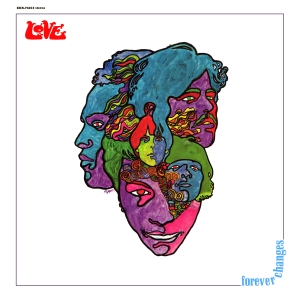 Postgrad-level acid rock from LA's most celebrated '60s rock band—in songs like "Alone Again Or," and "The Good Humor Man He Sees Everything Like This," the group delivered the paranoia of the streets wrapped in acoustic guitars and brass, masked by cryptic song titles.
Postgrad-level acid rock from LA's most celebrated '60s rock band—in songs like "Alone Again Or," and "The Good Humor Man He Sees Everything Like This," the group delivered the paranoia of the streets wrapped in acoustic guitars and brass, masked by cryptic song titles.
Motown Classics: Gold [V/A]
(Pye, 1968)
 The Kinks' ultimate manifesto of purpose, forsaking the soot of the city for the village green; "How I love things as they used to be," Ray Davies sings at the end, as if the stirring nostalgia of "Village Green," "Picture Book," and the title track hadn't already speak for themselves.
The Kinks' ultimate manifesto of purpose, forsaking the soot of the city for the village green; "How I love things as they used to be," Ray Davies sings at the end, as if the stirring nostalgia of "Village Green," "Picture Book," and the title track hadn't already speak for themselves.Love: Forever Changes
(Elektra, 1967)
 Postgrad-level acid rock from LA's most celebrated '60s rock band—in songs like "Alone Again Or," and "The Good Humor Man He Sees Everything Like This," the group delivered the paranoia of the streets wrapped in acoustic guitars and brass, masked by cryptic song titles.
Postgrad-level acid rock from LA's most celebrated '60s rock band—in songs like "Alone Again Or," and "The Good Humor Man He Sees Everything Like This," the group delivered the paranoia of the streets wrapped in acoustic guitars and brass, masked by cryptic song titles.Motown Classics: Gold [V/A]
(Motown, 1959-1973/2005)
Wilson Pickett: The Very Best Of
(Rhino, 1965-1970/1993)
Starting with the epic "In The Midnight Hour," "Wicked" Pickett sang some of the hardest soul of his day: the hot "Land Of 1,000 Dances," the cool "Funky Broadway," and the slick "Mustang Sally"; in "634-5789" he could even sing the phonebook and make it sound sexy.
Otis Redding: Otis Blue: Otis Redding Sings Soul
(Rhino, 1965-1970/1993)
Starting with the epic "In The Midnight Hour," "Wicked" Pickett sang some of the hardest soul of his day: the hot "Land Of 1,000 Dances," the cool "Funky Broadway," and the slick "Mustang Sally"; in "634-5789" he could even sing the phonebook and make it sound sexy.
Otis Redding: Otis Blue: Otis Redding Sings Soul
(Atco, 1965)
The King Of Soul's finest hour, as he reinterprets old hits ("A Change Is Gonna Come"), makes new ones ("Respect"), takes on the rockers at their own game ("Satisfaction"), and ruminates on love as only he can ("I've Been Loving You Too Long").
Smokey Robinson & The Miracles: The Definitive Collection
(Motown, 1960-1972/2006)
Famously hailed by Bob Dylan as "America's greatest living poet," the man behind timeless hits like "Stop Around," "You've Really Got A Hold On Me," and "The Tracks Of My Tears" shows that Dylan's words weren't just sensational—they were an understatement.
The Rolling Stones: Big Hits (High Tide & Green Grass)
(London, 1964-1966/1966)
The Rolling Stones: Beggars Banquet
(London, 1968)
With "Sympathy For The Devil" leading the way, The Stones enter their "Greatest Rock And Roll Band In The World" phase with the sound to prove it—part blues, part country, and, on "Street Fighting Man," all revolutionary.
The Rolling Stones: Let It Bleed
(London, 1969)
An Irish wake for the 1960s, released just on the cusp of their collapse by the band who would put the final nail on the coffin—the apocalyptic "Gimme Shelter" told the whole story, but "You Can't Always Get What You Want" kept you coming back for more.
The Rolling Stones: Sticky Fingers
(Rolling Stones, 1971)
 A '60s hangover that charted the terrain of the rest of their career in a haze of hits ("Brown Sugar"), ballads ("Wild Horse"), drugs ("Sister Morphine"), blues ("I Got The Blues"), country ("Dead Flowers"), roots ("You Got To Move"), and rock ("Sway").
A '60s hangover that charted the terrain of the rest of their career in a haze of hits ("Brown Sugar"), ballads ("Wild Horse"), drugs ("Sister Morphine"), blues ("I Got The Blues"), country ("Dead Flowers"), roots ("You Got To Move"), and rock ("Sway").The Rolling Stones: Exile On Main Street
(Rolling Stones, 1972)
A murky, messy sprawl of an album, with no real relent, just hard, thick rock; "Tumbling Dice" was the closest thing to a hit single, while "Rocks Off" and "Down The Line" played like the equivalent of drowning in a mud pit—is it any wonder that this is their finest album?
Diana Ross & The Supremes: The Definitive Collection
(Motown, 1964-1969/2008)
The Motown Sound in its Platonian form, best heard in 12 #1 songs—including "Where Did Our Love Go," "Baby Love," "Stop! In The Name Of Love," "You Can't Hurry Love," "Love Child," and a few that have nothing to do with love—still a record for a US vocal group.
Simon & Garfunkel: Bridge Over Troubled Water
Columbia, 1970)
The calm in the storm of '60s rock as captured on their definitive album, released just as the 1960s—and the duo itself—was dissolving altogether; with soon-to-be-standards like "The Boxer," "Cecilia," and the title track, this was a perfect ending for both.
Sly & The Family Stone: Greatest Hits
(Columbia, 1967-1969/1970)
A '60s utopia where race, sex, and class knew no boundaries and made music to match, as hits like "Dance To The Music" and "Everyday People" blended rock, pop, soul, and funk; in other words, a Great Society that actually worked, hidden in state-of-the-art acid rock.
Sly & The Family Stone: There's A Riot Goin' On!
(Columbia, 1971)
 The title answered Marvin Gaye's What's Going On while the music took the Great Society of Sly's '60s work and burnt it down; with songs like "Thank You For Talkin' To Me Africa," it was a dark, challenging LP, though "Family Affair" was still funky enough to hit #1.
The title answered Marvin Gaye's What's Going On while the music took the Great Society of Sly's '60s work and burnt it down; with songs like "Thank You For Talkin' To Me Africa," it was a dark, challenging LP, though "Family Affair" was still funky enough to hit #1.
Phil Spector: Back To Mono (1958-1969) [V/A]**
(Columbia, 1971)
 The title answered Marvin Gaye's What's Going On while the music took the Great Society of Sly's '60s work and burnt it down; with songs like "Thank You For Talkin' To Me Africa," it was a dark, challenging LP, though "Family Affair" was still funky enough to hit #1.
The title answered Marvin Gaye's What's Going On while the music took the Great Society of Sly's '60s work and burnt it down; with songs like "Thank You For Talkin' To Me Africa," it was a dark, challenging LP, though "Family Affair" was still funky enough to hit #1.Phil Spector: Back To Mono (1958-1969) [V/A]**
(ABKCO, 1958-1969/1991)
Rock's first visionary builds his Wall Of Sound brick by brick into a tidal wave of hits like The Crystals' "He's A Rebel" and The Ronettes' "Be My Baby"—or as Spector described it: "a Wagnerian approach to rock and roll: little symphonies for the kids."
The Velvet Underground & Nico
(Verve, 1967)
Overlooked at the time and indispensable ever since, Lou Reed & Co. crawled into rock and roll's seething id of hard drugs ("Heroin"), hard sex ("Venus In Furs"), and hard noise ("European Son"), inventing postmodern rock and roll and setting the stage for punk.
The Velvet Underground: Loaded
(Coltillion, 1970)
One last stab at commercial success after four years in the dessert, but even classics like "Sweet Jane" and "Rock And Roll" couldn't penetrate rock radio—even if they've been there ever since; as usual, the Velvets were way ahead of the game.
The Who: Meaty Beaty Big & Bouncy**
(Coltillion, 1970)
One last stab at commercial success after four years in the dessert, but even classics like "Sweet Jane" and "Rock And Roll" couldn't penetrate rock radio—even if they've been there ever since; as usual, the Velvets were way ahead of the game.
The Who: Meaty Beaty Big & Bouncy**
(Track, 1965-1970/1971)
They called it "Maximum R&B," but in early hits like "My Generation," "The Kids Are Alright," "Substitute," and the acid-inspired "I Can See For Miles," this was cutting-edge pop music, lovingly wrapped in a tempest of the hardest rock and roll of its time.
The Who: Tommy
(Track, 1969)
The Greatest Story Ever Told as a rock opera about a blind, deaf, and dumb boy who played pinball—and miraculously, in the pop rush of "Pinball Wizard," storming defiance of "We're Not Gonna Take It," and the epic "Go To The Mirror, Boy!" it somehow worked.
The Who: Who's Next
(Track, 1969)
The Greatest Story Ever Told as a rock opera about a blind, deaf, and dumb boy who played pinball—and miraculously, in the pop rush of "Pinball Wizard," storming defiance of "We're Not Gonna Take It," and the epic "Go To The Mirror, Boy!" it somehow worked.
The Who: Who's Next
(Track, 1971)
The group turns up the cynicism, throws in synthesizers, and reinvents themselves as arena rockers—God knows they were already loud enough, but with "Baba O'Riley" and "Won't Get Fooled Again," they had songs as huge as their venues; their finest album.
Jackie Wilson: The Very Best Of
(Rhino, 1957-1967/1994)
 From the proto-Motown funk of "Lonely Teardrops" through the crisp pop of "(That's Why) I Love You So" and the soaring "(Your Love Keeps Lifting Me) Higher And Higher," this is definitive proof that the man they called "Mr. Excitement" more than lived up to his name.
From the proto-Motown funk of "Lonely Teardrops" through the crisp pop of "(That's Why) I Love You So" and the soaring "(Your Love Keeps Lifting Me) Higher And Higher," this is definitive proof that the man they called "Mr. Excitement" more than lived up to his name.
The Yardbirds: Greatest Hits, Volume One (1964-1966)
(Rhino, 1964-1966/1990)
A revolving door of guitar legends, this set covers the Eric Clapton and Jeff Beck years, where live rave-ups like "Got Love If You Want It" and "Smokestack Lightning" make way for the pop of "For Your Love" and then finally the psychedelic rock of "Shapes Of Things."
Frank Zappa: We're Only In It For The Money
(Rhino, 1957-1967/1994)
 From the proto-Motown funk of "Lonely Teardrops" through the crisp pop of "(That's Why) I Love You So" and the soaring "(Your Love Keeps Lifting Me) Higher And Higher," this is definitive proof that the man they called "Mr. Excitement" more than lived up to his name.
From the proto-Motown funk of "Lonely Teardrops" through the crisp pop of "(That's Why) I Love You So" and the soaring "(Your Love Keeps Lifting Me) Higher And Higher," this is definitive proof that the man they called "Mr. Excitement" more than lived up to his name.The Yardbirds: Greatest Hits, Volume One (1964-1966)
(Rhino, 1964-1966/1990)
A revolving door of guitar legends, this set covers the Eric Clapton and Jeff Beck years, where live rave-ups like "Got Love If You Want It" and "Smokestack Lightning" make way for the pop of "For Your Love" and then finally the psychedelic rock of "Shapes Of Things."
Frank Zappa: We're Only In It For The Money
(Verve, 1968)
The American Sgt. Pepper, which turned the original inside-out—literally, in its artwork and conceptually with its savage hippie lampoons like "Who Needs The Peace Corps?" and "Absolutely Free"—and in doing so, actually bettered it.
The Zombies: Odessey And Oracle
(CBS, 1968)
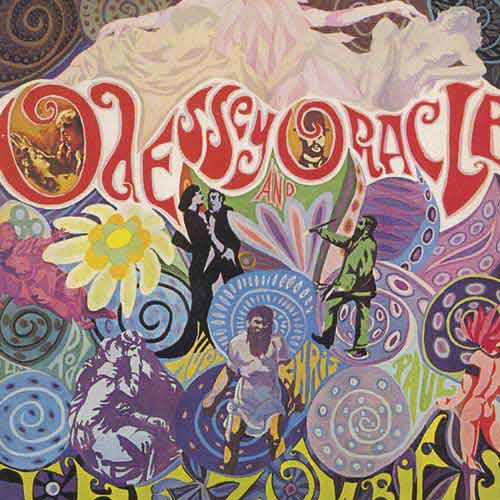 A song-cycle about love changing with the seasons, covered in golden harmonies and filled with hope ("This Will Be Our Year"), friendship ("Friends Of Mine"), and lust (the fluke hit "The Time Of The Season"), by a band that had split by the time it was released.
A song-cycle about love changing with the seasons, covered in golden harmonies and filled with hope ("This Will Be Our Year"), friendship ("Friends Of Mine"), and lust (the fluke hit "The Time Of The Season"), by a band that had split by the time it was released.
(CBS, 1968)
 A song-cycle about love changing with the seasons, covered in golden harmonies and filled with hope ("This Will Be Our Year"), friendship ("Friends Of Mine"), and lust (the fluke hit "The Time Of The Season"), by a band that had split by the time it was released.
A song-cycle about love changing with the seasons, covered in golden harmonies and filled with hope ("This Will Be Our Year"), friendship ("Friends Of Mine"), and lust (the fluke hit "The Time Of The Season"), by a band that had split by the time it was released.
The 1970s.
AC/DC: Back In Black
(Atlantic, 1980)
AC/DC was on the brink of international stardom when singer Bon Scott died from alcohol poisoning; from the tolling of "Hell's Bells" through the title track and infectious "You Shook Me All Night," this was his funeral—and a better-than-ever rebirth for the band.
Aerosmith: Rocks
(Columbia, 1976)
They would have bigger and more popular albums, but in tracks like "Last Child" and "Back In the Saddle," they would never have better; this is point at which Aerosmith could look back and call themselves "America's Greatest Rock And Roll Band" with a straight face.
The Allman Brothers Band: At Fillmore East
(Capricorn, 1971)
The biggest American band of their day shows off their musical prowess in this double-LP with equal parts hits ("Statesboro Blues") and jams ("Whipping Post"), built around Duane's electric slide and Gregg's rough-hewn vocals, all captured live and raw, just before the fall.
Big Star: #1 Record/Radio City
(Stax, 1972-1974/1992)
 Power-pop invented by rockers, adored by critics, and ignored by the masses; this CD collects their first two albums, with songs like "Out In The Street," "The Ballad Of El Goodo," and the luscious "September Gurls"—easily the greatest song to never make the charts.
Power-pop invented by rockers, adored by critics, and ignored by the masses; this CD collects their first two albums, with songs like "Out In The Street," "The Ballad Of El Goodo," and the luscious "September Gurls"—easily the greatest song to never make the charts.Black Sabbath: Paranoid
(Vertigo, 1970)
The definitive album from the definitive heavy metal band, with enormous riffs fueling angst-filled classics like "Iron Man," "War Pigs," and the title track, all spit with venom by Ozzy Osbourne, decades before he became a pop-culture punchline.
David Bowie: Hunky Dory
(RCA, 1971)
Bowie's first masterpiece, with a hit ("Changes"), an epic ("Life On Mars?"), and three killings of the father ("Andy Warhol," "Song to Bob Dylan, and the Reed-inspired "Queen Bitch"), before returning to the strangeness ("The Bewlay Brothers") from which it had come.
David Bowie: The Rise & Fall Of Ziggy Stardust & The Spiders From Mars
(RCA, 1971)
Bowie's first masterpiece, with a hit ("Changes"), an epic ("Life On Mars?"), and three killings of the father ("Andy Warhol," "Song to Bob Dylan, and the Reed-inspired "Queen Bitch"), before returning to the strangeness ("The Bewlay Brothers") from which it had come.
David Bowie: The Rise & Fall Of Ziggy Stardust & The Spiders From Mars
(RCA, 1972)
Rock and roll as a passion play about an alien named "Ziggy Stardust" who has "Five Years" to become the world's biggest "Star," until committing a "Rock And Roll Suicide"; if Bowie couldn't quite live it out in real life, you'd never know it from the music.
Jackson Browne: Late For The Sky
(Asylum, 1974)
 Released just after Nixon resigned, Browne captured the jadedness and disillusion that spread through the '60s generation like cancer, as songs like the title track, "Fountain Of Sorrow," and "For A Dancer" were bittersweet ruminations on life, love, and death.
Released just after Nixon resigned, Browne captured the jadedness and disillusion that spread through the '60s generation like cancer, as songs like the title track, "Fountain Of Sorrow," and "For A Dancer" were bittersweet ruminations on life, love, and death.
The Clash: The Clash [US Edition]
(CBS, 1977-1979/1979)
 By substituting lesser album tracks for singles, this was a virtual greatest hits of The Clash's early years, with the raw punk of "White Riot" and "London's Burning," and, in the punk/reggae fusion "(White Man In) Hammersmith Palais," a hint of their creative future.
By substituting lesser album tracks for singles, this was a virtual greatest hits of The Clash's early years, with the raw punk of "White Riot" and "London's Burning," and, in the punk/reggae fusion "(White Man In) Hammersmith Palais," a hint of their creative future.
The Clash: London Calling
(Asylum, 1974)
 Released just after Nixon resigned, Browne captured the jadedness and disillusion that spread through the '60s generation like cancer, as songs like the title track, "Fountain Of Sorrow," and "For A Dancer" were bittersweet ruminations on life, love, and death.
Released just after Nixon resigned, Browne captured the jadedness and disillusion that spread through the '60s generation like cancer, as songs like the title track, "Fountain Of Sorrow," and "For A Dancer" were bittersweet ruminations on life, love, and death.The Clash: The Clash [US Edition]
(CBS, 1977-1979/1979)
 By substituting lesser album tracks for singles, this was a virtual greatest hits of The Clash's early years, with the raw punk of "White Riot" and "London's Burning," and, in the punk/reggae fusion "(White Man In) Hammersmith Palais," a hint of their creative future.
By substituting lesser album tracks for singles, this was a virtual greatest hits of The Clash's early years, with the raw punk of "White Riot" and "London's Burning," and, in the punk/reggae fusion "(White Man In) Hammersmith Palais," a hint of their creative future.The Clash: London Calling
(CBS, 1979)
The Only Band That Mattered ventures out from punk rock into an apocalyptic rock wasteland of the title track, and remake the music in their own image with rockabilly ("Brand New Cadillac"), reggae ("Rudie Can't Fail"), and a surprise pop hit ("Train In Vain").
Elvis Costello: This Year's Model
(Radar, 1978)
Elvis Costello once famously remarked that his chief inspirations for music were "revenge and guilt," and they can best be heard here, in the angst of "No Action," the grit of "Pump It Up," and the rush of "Radio Radio," which assault the ear like punk but linger like pop.
Derek & The Dominoes: Layla & Other Assorted Love Songs
(Radar, 1978)
Elvis Costello once famously remarked that his chief inspirations for music were "revenge and guilt," and they can best be heard here, in the angst of "No Action," the grit of "Pump It Up," and the rush of "Radio Radio," which assault the ear like punk but linger like pop.
Derek & The Dominoes: Layla & Other Assorted Love Songs
(Atco, 1970)
Eric Clapton's finest hour, his guitar work energized by bandmate Duane Allman's slide ("Bell Bottom Blues") and his performances wracked by the agony of being in love with his best friend's wife ("Layla"); it was too raw to last, but the best rock usually is.
The Eagles: Hotel California
(Asylum, 1976)
A bicentennial portrait of America from the other side of western expansionism, built around the title track's palace gilded of sin; "They call it paradise, I don't know why," the singer warns in the closer, "The Last Resort," "You call some place paradise, kiss it goodbye."
Brian Eno: Another Green World
(Astralwerks, 1975)
 Between pioneering art rock with Roxy Music and producing legendary albums for David Bowie and U2, Brian Eno released this iconoclastic set of experimental music and sounds, which, in songs like "Sky Saw," all but single-handedly created ambient music.
Between pioneering art rock with Roxy Music and producing legendary albums for David Bowie and U2, Brian Eno released this iconoclastic set of experimental music and sounds, which, in songs like "Sky Saw," all but single-handedly created ambient music.
Fleetwood Mac: Rumours
(Astralwerks, 1975)
 Between pioneering art rock with Roxy Music and producing legendary albums for David Bowie and U2, Brian Eno released this iconoclastic set of experimental music and sounds, which, in songs like "Sky Saw," all but single-handedly created ambient music.
Between pioneering art rock with Roxy Music and producing legendary albums for David Bowie and U2, Brian Eno released this iconoclastic set of experimental music and sounds, which, in songs like "Sky Saw," all but single-handedly created ambient music.Fleetwood Mac: Rumours
(Warner Brothers, 1977)
A perfect '70s pop band whose relationships were falling apart craft a perfect '70s pop album about relationships falling apart—powered by hits like "Dreams," "Don't Stop," and "The Chain," it was the best-selling album of all time until Thriller came along.
Al Green: Greatest Hits
(Hi, 1971-1973/1975)
Following in the footsteps of Cooke and Redding, Green was the top soul singer of his time, as he crooned and pled his way through "Tired Of Being Alone," "Let's Stay Together," and "Love And Happiness," until he gave up his pop soul in favor of his immortal soul.
The Harder They Come Soundtrack [V/A]
(Island, 1967-1972/1972)
The film soundtrack that introduced reggae to the world, featuring Jimmy Cliff (the title track), Desmond Dekker ("007 (Shanty Town)"), The Maytals ("Pressure Drop"), and more—serves as both a primer for the music and a masterpiece in its own right.
Billy Joel: The Stranger
(Columbia, 1977)
 After a string of commercial misfires, Billy Joel finally broke through with this, filled with hits ("Movin' Out (Anthony's Song)"), epics ("Scenes From An Italian Restaurant") and anthems ("Only The Good Die Young") that provided the backbone for his long career.
After a string of commercial misfires, Billy Joel finally broke through with this, filled with hits ("Movin' Out (Anthony's Song)"), epics ("Scenes From An Italian Restaurant") and anthems ("Only The Good Die Young") that provided the backbone for his long career.
Elton John: Goodbye Yellow Brick Road
(Columbia, 1977)
 After a string of commercial misfires, Billy Joel finally broke through with this, filled with hits ("Movin' Out (Anthony's Song)"), epics ("Scenes From An Italian Restaurant") and anthems ("Only The Good Die Young") that provided the backbone for his long career.
After a string of commercial misfires, Billy Joel finally broke through with this, filled with hits ("Movin' Out (Anthony's Song)"), epics ("Scenes From An Italian Restaurant") and anthems ("Only The Good Die Young") that provided the backbone for his long career.Elton John: Goodbye Yellow Brick Road
(MCA, 1973)
The '70s most indulgent artist makes his most indulgent statement, an ambitious, sprawling double-album of hits ("Bennie And The Jets"), classics ("Candle In The Wind"), and excess (the 11-minute plus "Funeral For A Friend/Love Lies Bleeding" opener).
Carole King: Tapestry
(Ode, 1971)
One of the greatest songwriters of the '60s becomes the biggest singer-songwriter of the '70s; though she re-imagined her old hits in a new confessional way, it was new songs like "It's Too Late" and "So Far Away" that kept the LP on the charts for years.
Kraftwerk: Trans-Europe Express
(Kling-Klang, 1976)
 "Mystery Train," as covered by four German computer programmers who just happened to also reinvent the beat, as songs like the title track kept time with a robot heart and haunting vocals, redefining dance music and setting the stage for techno—and all that came after.
"Mystery Train," as covered by four German computer programmers who just happened to also reinvent the beat, as songs like the title track kept time with a robot heart and haunting vocals, redefining dance music and setting the stage for techno—and all that came after.
Led Zeppelin: II
(Ode, 1971)
One of the greatest songwriters of the '60s becomes the biggest singer-songwriter of the '70s; though she re-imagined her old hits in a new confessional way, it was new songs like "It's Too Late" and "So Far Away" that kept the LP on the charts for years.
Kraftwerk: Trans-Europe Express
(Kling-Klang, 1976)
 "Mystery Train," as covered by four German computer programmers who just happened to also reinvent the beat, as songs like the title track kept time with a robot heart and haunting vocals, redefining dance music and setting the stage for techno—and all that came after.
"Mystery Train," as covered by four German computer programmers who just happened to also reinvent the beat, as songs like the title track kept time with a robot heart and haunting vocals, redefining dance music and setting the stage for techno—and all that came after.Led Zeppelin: II
(Atlantic, 1969)
The archetypal heavy metal rockers perfect hard rock ("What Is And What Should Never Be" and "Heartbreaker") and play tribute to the blues ("The Lemon Song" and "Bring It On Home"), except on "Whole Lotta Love" (their sole US Top 10 hit), in which they do both.
Led Zeppelin: Untitled [IV]
(Atlantic, 1971)
Their finest album, which means it was hard rock's finest album as well—"Black Dog," "Rock And Roll," and "Stairway To Heaven" may get it all of the attention, but it's the epic reworking of the ancient blues holler "When The Levee Breaks" that steals the show.
John Lennon/Plastic Ono Band
(Apple, 1970)
Rock album-making as primal scream therapy—or, with "God," a Cartesian exercise in what constitutes reality; either way, in "Mother," "Working Class Hero," and "Love," Lennon broke out of The Beatles to craft the most "real" singer-songwriter album of them all.
John Lennon: Imagine
(Apple, 1971)
After tearing everything down with Plastic Ono Band, Lennon rebuilt things with this, with confessional pop ("Jealous Guy"), raw rock ("It's So Hard"), and, in the title track, a socialist manifesto packaged into one of the most beautiful songs ever written.
Bob Marley: Legend
(Apple, 1971)
After tearing everything down with Plastic Ono Band, Lennon rebuilt things with this, with confessional pop ("Jealous Guy"), raw rock ("It's So Hard"), and, in the title track, a socialist manifesto packaged into one of the most beautiful songs ever written.
Bob Marley: Legend
(Tuff Gong, 1973-1980/1984)
A perfect summation of reggae's master that more than lives up to its title, as classics like "Get Up Stand Up," "One Love," "I Shot The Sheriff" and more have propelled it to become the biggest-selling reggae album of all-time; I'd say you should own it, but you already do.
Curtis Mayfield: Super Fly
(RCA, 1972)
Hear the voice of The Impressions cash in his sweet dreams for the cold realities in "Freddie's Dead," "Pusherman," and the title track—and help define '70s African American culture in the process, all while launching the beats of a thousand rap samples.
Joni Mitchell: Blue
(Reprise, 1972)
 Sweet Baby James was earlier and Tapestry was bigger, but Blue was the best—over ten stark ballads like "Carey" and "A Case Of You," Mitchell plumbs the depths of her emotions, all coming back to the central question of "California": "Will you take me as I am?"
Sweet Baby James was earlier and Tapestry was bigger, but Blue was the best—over ten stark ballads like "Carey" and "A Case Of You," Mitchell plumbs the depths of her emotions, all coming back to the central question of "California": "Will you take me as I am?"
Van Morrison: Astral Weeks
(Warner Brothers, 1968)
Jazz as pop as rock as memory as time, ventured in the slipstream and wrapped in the blues, way up in the heaven; or, in songs like "Cyprus Avenue" and "Madame George" a journey deep into the mystic, as crafted by the most mystical rocker of them all.
Van Morrison: Moondance
(Warner Brothers, 1970)
 Van Morrison's most popular album, thanks in part to its romantic streak—the rollicking "And It Stoned Me," the hush "Crazy Love," and the swinging title track—which took the mysticism of his earlier work to a whole new level, and then went out with the show-stopping "Caravan."
Van Morrison's most popular album, thanks in part to its romantic streak—the rollicking "And It Stoned Me," the hush "Crazy Love," and the swinging title track—which took the mysticism of his earlier work to a whole new level, and then went out with the show-stopping "Caravan."
The New York Dolls: The New York Dolls
(Mercury, 1973)
 They reached for The Rolling Stones, dressed like glam, and inadvertently invented punk—some three years ahead of schedule—as "Personality Crisis," "Looking For A Kiss," and "Trash" were exercises in savage amateurism that sold few but inspired many.
They reached for The Rolling Stones, dressed like glam, and inadvertently invented punk—some three years ahead of schedule—as "Personality Crisis," "Looking For A Kiss," and "Trash" were exercises in savage amateurism that sold few but inspired many.
(Warner Brothers, 1970)
 Van Morrison's most popular album, thanks in part to its romantic streak—the rollicking "And It Stoned Me," the hush "Crazy Love," and the swinging title track—which took the mysticism of his earlier work to a whole new level, and then went out with the show-stopping "Caravan."
Van Morrison's most popular album, thanks in part to its romantic streak—the rollicking "And It Stoned Me," the hush "Crazy Love," and the swinging title track—which took the mysticism of his earlier work to a whole new level, and then went out with the show-stopping "Caravan."The New York Dolls: The New York Dolls
(Mercury, 1973)
 They reached for The Rolling Stones, dressed like glam, and inadvertently invented punk—some three years ahead of schedule—as "Personality Crisis," "Looking For A Kiss," and "Trash" were exercises in savage amateurism that sold few but inspired many.
They reached for The Rolling Stones, dressed like glam, and inadvertently invented punk—some three years ahead of schedule—as "Personality Crisis," "Looking For A Kiss," and "Trash" were exercises in savage amateurism that sold few but inspired many.
Randy Newman: 12 Songs
(Reprise, 1970)
The O'Jays: Back Stabbers
(Philadelphia International, 1972)
 The masters of Philly soul craft a smooth-yet-funky meditation on the world that is at once dire ("992 Arguments," the title track) and hopeful ("(They Call Me) Mr. Lucky," "Sunshine"), with the latter winning out in the end with the transcendent joy of "Love Train."
The masters of Philly soul craft a smooth-yet-funky meditation on the world that is at once dire ("992 Arguments," the title track) and hopeful ("(They Call Me) Mr. Lucky," "Sunshine"), with the latter winning out in the end with the transcendent joy of "Love Train."
Parliament: Mothership Connection
(Philadelphia International, 1972)
 The masters of Philly soul craft a smooth-yet-funky meditation on the world that is at once dire ("992 Arguments," the title track) and hopeful ("(They Call Me) Mr. Lucky," "Sunshine"), with the latter winning out in the end with the transcendent joy of "Love Train."
The masters of Philly soul craft a smooth-yet-funky meditation on the world that is at once dire ("992 Arguments," the title track) and hopeful ("(They Call Me) Mr. Lucky," "Sunshine"), with the latter winning out in the end with the transcendent joy of "Love Train."Parliament: Mothership Connection
(Casablanca, 1975)
Funk perfected in an intergalactic concept album by George Clinton & Co. that keeps the party going from "P. Funk (Wants To Get Funked Up)" through "Star Child"—but nothing tops the bass singer in "Give Up The Funk" intoning tear the roof off the sucker...
Pink Floyd: The Dark Side Of The Moon
(Capitol, 1973)
Although it was only #1 for one week and had only one medium-sized hit ("Money"), this LP stayed on the US charts for a record decade and a half, as rock fans were swept into its singularly epic vision, culminating in the eerie finale of "Brain Damage/Eclipse."
Pink Floyd: The Wall
(Capitol, 1979)
 The rare ambitious concept album that worked, thanks to the irresistible FM-ready paranoia of "Hey You" and "Comfortably Numb," while the "We don't need no education"-chanting "Another Brick In The Wall Part 2" gave Pink Floyd its only #1 pop single.
The rare ambitious concept album that worked, thanks to the irresistible FM-ready paranoia of "Hey You" and "Comfortably Numb," while the "We don't need no education"-chanting "Another Brick In The Wall Part 2" gave Pink Floyd its only #1 pop single.
Queen: A Night At The Opera
(EMI, 1975)
 Equal parts rocking and pretentious, this was the most expensive album ever produced up to that point in rock; the cutting-edge pop of "I'm In Love With My Car" and "You're My Best Friend" sounded great, but it was "Bohemian Rhapsody" that stole the show.
Equal parts rocking and pretentious, this was the most expensive album ever produced up to that point in rock; the cutting-edge pop of "I'm In Love With My Car" and "You're My Best Friend" sounded great, but it was "Bohemian Rhapsody" that stole the show.
The Ramones: The Ramones
(Capitol, 1979)
 The rare ambitious concept album that worked, thanks to the irresistible FM-ready paranoia of "Hey You" and "Comfortably Numb," while the "We don't need no education"-chanting "Another Brick In The Wall Part 2" gave Pink Floyd its only #1 pop single.
The rare ambitious concept album that worked, thanks to the irresistible FM-ready paranoia of "Hey You" and "Comfortably Numb," while the "We don't need no education"-chanting "Another Brick In The Wall Part 2" gave Pink Floyd its only #1 pop single.Queen: A Night At The Opera
(EMI, 1975)
 Equal parts rocking and pretentious, this was the most expensive album ever produced up to that point in rock; the cutting-edge pop of "I'm In Love With My Car" and "You're My Best Friend" sounded great, but it was "Bohemian Rhapsody" that stole the show.
Equal parts rocking and pretentious, this was the most expensive album ever produced up to that point in rock; the cutting-edge pop of "I'm In Love With My Car" and "You're My Best Friend" sounded great, but it was "Bohemian Rhapsody" that stole the show.The Ramones: The Ramones
(Sire, 1976)
"1-2-3-4!" As in, 1 revolutionary sound + 2-minute songs + 3-chords + 4 cartoon rockers posing as brothers = what leader Joey Ramone famously described as a sort of bubblegum music for sick kids—or, as it would soon be called, punk.
Roxy Music: Siren
(Atco, 1975)
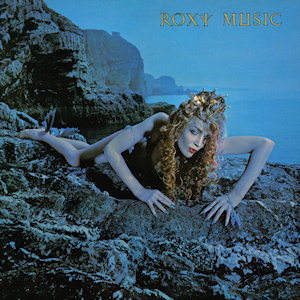 Art rock reaches the masses—sort of—with a minor hit single in the form of the infectious "Love Is The Drug" and the lush crooning of Bryan Ferry, with songs like "Sentimental Fool" and "Both Ends Burning" striping any irony off of their romanticism.
Art rock reaches the masses—sort of—with a minor hit single in the form of the infectious "Love Is The Drug" and the lush crooning of Bryan Ferry, with songs like "Sentimental Fool" and "Both Ends Burning" striping any irony off of their romanticism.
Santana: Abraxas
(Columbia, 1970)
 After their cooly-received debut, Santana stretched out on Abraxas and discovered their signature sound, as songs like "Black Magic Woman/Gypsy Queen" and "Oye Como Va" fused rock guitar with Latin rhythms, rounded out with touches of jazz and the blues.
After their cooly-received debut, Santana stretched out on Abraxas and discovered their signature sound, as songs like "Black Magic Woman/Gypsy Queen" and "Oye Como Va" fused rock guitar with Latin rhythms, rounded out with touches of jazz and the blues.
Saturday Night Fever: Original Sound Track [V/A]
(Polydor, 1975-1977/1977)
 An instant disco-collection—The Bee Gees got all the attention ("Stayin' Alive"), but had key assists from The Trammps ("Disco Inferno") and KC & The Sunshine Band ("Boogie Shoes"), among others; if everyone hated it so much, how the hell did it sell so many copies?
An instant disco-collection—The Bee Gees got all the attention ("Stayin' Alive"), but had key assists from The Trammps ("Disco Inferno") and KC & The Sunshine Band ("Boogie Shoes"), among others; if everyone hated it so much, how the hell did it sell so many copies?
The Sex Pistols: Never Mind The Bollocks
(Atco, 1975)
 Art rock reaches the masses—sort of—with a minor hit single in the form of the infectious "Love Is The Drug" and the lush crooning of Bryan Ferry, with songs like "Sentimental Fool" and "Both Ends Burning" striping any irony off of their romanticism.
Art rock reaches the masses—sort of—with a minor hit single in the form of the infectious "Love Is The Drug" and the lush crooning of Bryan Ferry, with songs like "Sentimental Fool" and "Both Ends Burning" striping any irony off of their romanticism.Santana: Abraxas
(Columbia, 1970)
 After their cooly-received debut, Santana stretched out on Abraxas and discovered their signature sound, as songs like "Black Magic Woman/Gypsy Queen" and "Oye Como Va" fused rock guitar with Latin rhythms, rounded out with touches of jazz and the blues.
After their cooly-received debut, Santana stretched out on Abraxas and discovered their signature sound, as songs like "Black Magic Woman/Gypsy Queen" and "Oye Como Va" fused rock guitar with Latin rhythms, rounded out with touches of jazz and the blues.Saturday Night Fever: Original Sound Track [V/A]
(Polydor, 1975-1977/1977)
 An instant disco-collection—The Bee Gees got all the attention ("Stayin' Alive"), but had key assists from The Trammps ("Disco Inferno") and KC & The Sunshine Band ("Boogie Shoes"), among others; if everyone hated it so much, how the hell did it sell so many copies?
An instant disco-collection—The Bee Gees got all the attention ("Stayin' Alive"), but had key assists from The Trammps ("Disco Inferno") and KC & The Sunshine Band ("Boogie Shoes"), among others; if everyone hated it so much, how the hell did it sell so many copies?The Sex Pistols: Never Mind The Bollocks
(Virgin, 1977)
As the anti-leaders of rock's imploded third wave, the definitive punk band defines the sound in instant-standards like "Anarchy In The UK" and "God Save The Queen," relentlessly screamed with a blank stare by a hunchbacked man with green teeth named Johnny Rotten.
Patti Smith: Horses
(Arista, 1975)
With "Jesus died for somebody's sins, but not mine," it had the best first line in rock—and the rest of the LP more than lived up to its promise; from the trash-rock rewrite of "Gloria" through the epic "Land," poetry, pop, and punk mingled freely until all that remained was art.
Bruce Springsteen: Born To Run
(Columbia, 1975)
Rock and roll's biggest fan grabs Elvis's jacket, Dylan's cadence, and Spector's sound in a laughing grifter's shot at the music's biggest statement—and, in songs like the rambling "Thunder Road" and the wanderlust title track, comes closer to it than anyone has since.
Bruce Springsteen: Born In The U.S.A.
(Columbia, 1984)
The Promise is broken by four years of Reaganomics, yet he masked anger in nostalgia ("Glory Days") and fun ("Dancing In The Dark") so effectively that even Reagan tried to appropriate the bitter anti-Vietnam title track as a feel-good, all-American fist-pumper.
Steely Dan: Pretzel Logic
(ABC, 1974)
Two men, armed with a record studio, produce some of the most accomplished mainstream pop of their day, than fill it with strange, cryptic words that sound like jokes but linger like secrets; but where would radio be without "Rikki Don't Lose That Number"?
Rod Stewart: Every Picture Tells A Story
(Mercury, 1971)
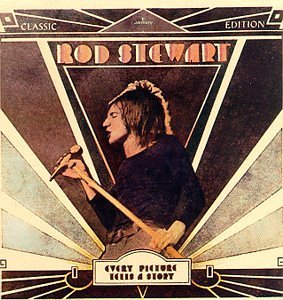 Rod the Mod takes on Elvis ("That's All Right"), Dylan ("Tomorrow Is A Long Time"), and Motown ("(I Know) I'm Losing You"), and comes out all the wiser, as he struts his stuff over the title track and his mandolin-driven signature, "Maggie May."
Rod the Mod takes on Elvis ("That's All Right"), Dylan ("Tomorrow Is A Long Time"), and Motown ("(I Know) I'm Losing You"), and comes out all the wiser, as he struts his stuff over the title track and his mandolin-driven signature, "Maggie May."
The Stooges: Fun House
(Elektra, 1970)
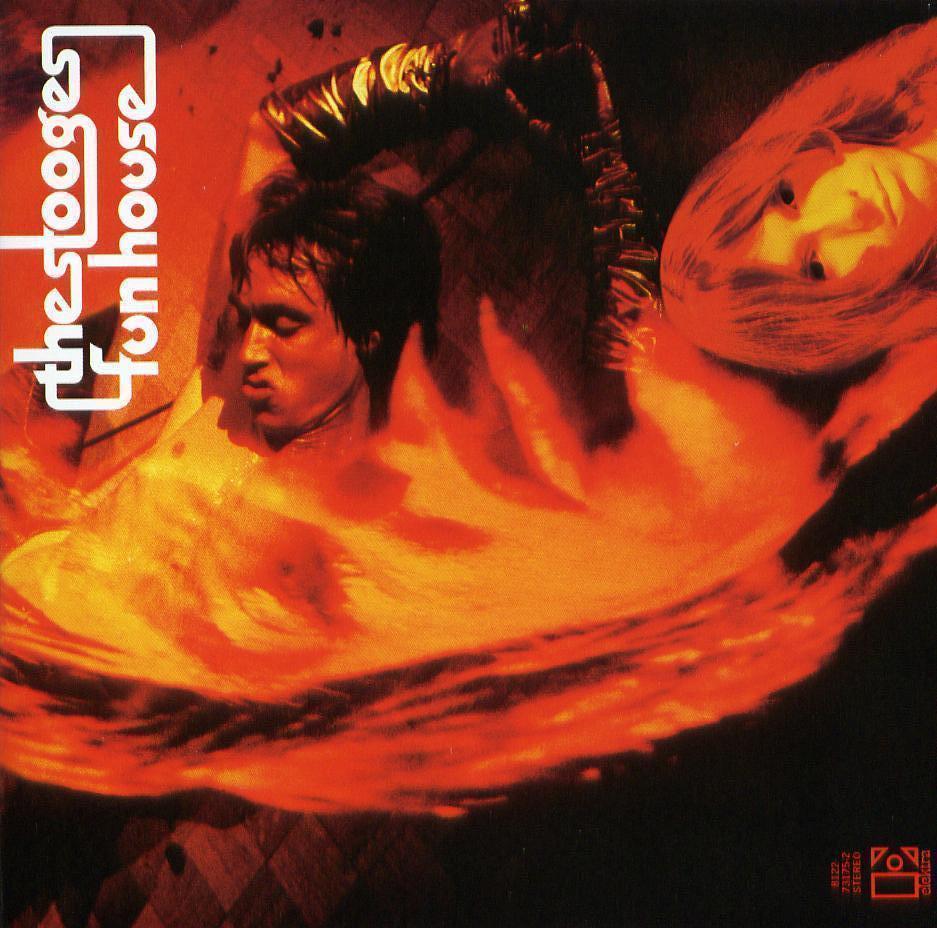 Astonishing proto-punk from The Iggy Who Would Be Pop & Co., from the menacing "Out In The Street" and the sonic blast of "TV Eye" on through to the dissonant Armageddon of "L.A. Blues"; altogether, it was mad, glorious, and ultimately prophetic.
Astonishing proto-punk from The Iggy Who Would Be Pop & Co., from the menacing "Out In The Street" and the sonic blast of "TV Eye" on through to the dissonant Armageddon of "L.A. Blues"; altogether, it was mad, glorious, and ultimately prophetic.
James Taylor: Sweet Baby James
(Warner Brothers, 1970)
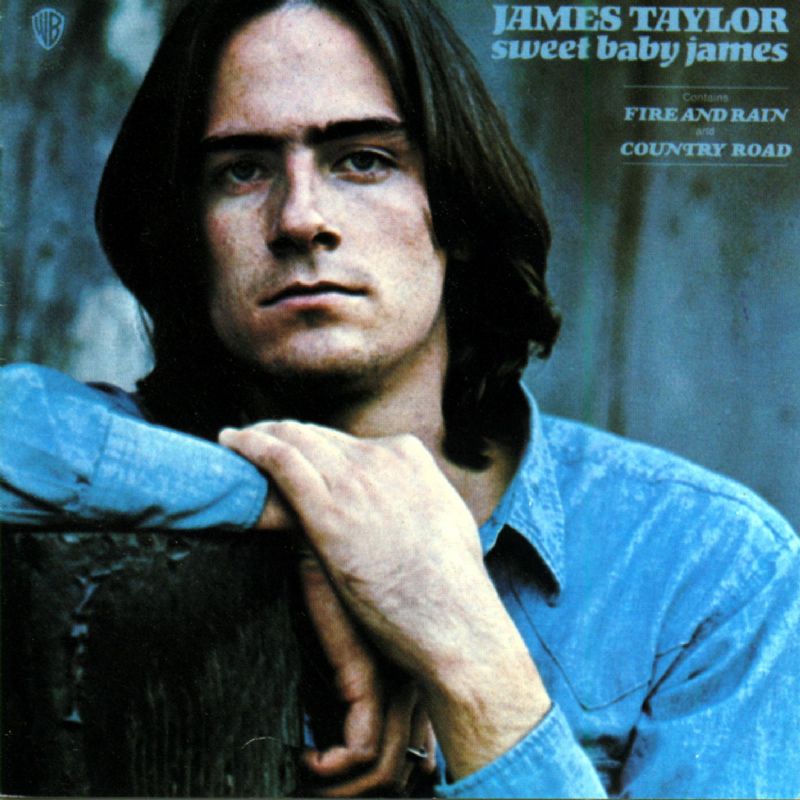 The most durable of the '70s singer-songwriters, he made his name on this, the finest set of songs in his long career: the cowboy lullaby of the title track, the ridiculous "Steamroller Blues," the rambling "Country Road," and the heartbreaking "Fire And Rain."
The most durable of the '70s singer-songwriters, he made his name on this, the finest set of songs in his long career: the cowboy lullaby of the title track, the ridiculous "Steamroller Blues," the rambling "Country Road," and the heartbreaking "Fire And Rain."
Stevie Wonder: Talking Book
(ABC, 1974)
Two men, armed with a record studio, produce some of the most accomplished mainstream pop of their day, than fill it with strange, cryptic words that sound like jokes but linger like secrets; but where would radio be without "Rikki Don't Lose That Number"?
Rod Stewart: Every Picture Tells A Story
(Mercury, 1971)
 Rod the Mod takes on Elvis ("That's All Right"), Dylan ("Tomorrow Is A Long Time"), and Motown ("(I Know) I'm Losing You"), and comes out all the wiser, as he struts his stuff over the title track and his mandolin-driven signature, "Maggie May."
Rod the Mod takes on Elvis ("That's All Right"), Dylan ("Tomorrow Is A Long Time"), and Motown ("(I Know) I'm Losing You"), and comes out all the wiser, as he struts his stuff over the title track and his mandolin-driven signature, "Maggie May."The Stooges: Fun House
(Elektra, 1970)
 Astonishing proto-punk from The Iggy Who Would Be Pop & Co., from the menacing "Out In The Street" and the sonic blast of "TV Eye" on through to the dissonant Armageddon of "L.A. Blues"; altogether, it was mad, glorious, and ultimately prophetic.
Astonishing proto-punk from The Iggy Who Would Be Pop & Co., from the menacing "Out In The Street" and the sonic blast of "TV Eye" on through to the dissonant Armageddon of "L.A. Blues"; altogether, it was mad, glorious, and ultimately prophetic.James Taylor: Sweet Baby James
(Warner Brothers, 1970)
 The most durable of the '70s singer-songwriters, he made his name on this, the finest set of songs in his long career: the cowboy lullaby of the title track, the ridiculous "Steamroller Blues," the rambling "Country Road," and the heartbreaking "Fire And Rain."
The most durable of the '70s singer-songwriters, he made his name on this, the finest set of songs in his long career: the cowboy lullaby of the title track, the ridiculous "Steamroller Blues," the rambling "Country Road," and the heartbreaking "Fire And Rain."Stevie Wonder: Talking Book
(Tamla, 1972)
Motown's boy genius grows up, reaches for greatness, and finally gets it with this, his first masterpiece; "You Are The Sunshine Of My Life" and "I Believe" are the standards, but "Superstition" is still the funkiest thing I've ever heard.
Stevie Wonder: Innervisions
(Talma, 1973)
Wonder survives a car wreck, makes himself into a one-man band in the studio, and makes the music of his life; along the way was love ("All In Love Is Fair"), politics ("Living For The City"), drugs ("Too High"), and hot funk ("Higher Ground").
Stevie Wonder: Songs In The Key Of Life
(Tamla, 1976)
An ambitious two-record-and-one-EP set that provided a tour of African-American music, with glimmers of jazz ("Sir Duke"), soul ("Knocks Me Off My Feet"), pop ("Isn't She Lovely"), and funk ("Pastime Paradise") so hot, it would be lifted directly into hip-hop.
Neil Young: After The Gold Rush
(Reprise, 1970)
The 1980s.
The Beastie Boys: Paul's Boutique
(Capitol, 1989)
Three NYC rap-party pranksters reinvent themselves into cutting-edge MCs—sly, slick, and full of allusions, best heard in "Shake Your Rump," "Hey Ladies," and "Shadrack"—on top of a platter of samples so thick, it redefines the meaning of American freedom in music.
Black Flag: Damaged
(SST, 1981)
 The chief architects of hardcore punk define the music as Henry Rollins hollers his way through the band's constantly fluctuating manic tempo like a Ramones being eaten by a tape deck, but the mad rush of songs like "Rise Above" influenced countless young punks.
The chief architects of hardcore punk define the music as Henry Rollins hollers his way through the band's constantly fluctuating manic tempo like a Ramones being eaten by a tape deck, but the mad rush of songs like "Rise Above" influenced countless young punks.
The Cure: Staring At The Sea: The Singles
(Fiction, 1978-1985/1986)
 The birth of UK alternative rock, as articulated by the red lips of proto-goth Robert Smith in songs that were classic ("Boys Don't Cry"), bizarre ("The Love Cats"), danceable ("Close To You"), and at times, politically incorrect ("Killing An Arab").
The birth of UK alternative rock, as articulated by the red lips of proto-goth Robert Smith in songs that were classic ("Boys Don't Cry"), bizarre ("The Love Cats"), danceable ("Close To You"), and at times, politically incorrect ("Killing An Arab").
De La Soul: 3 Feet High And Rising
(Tommy Boy, 1989)
 De La Soul revolutionized rap music by turning down the beats and turning up the irony, as sample-filled songs like "The Magic Number" and "Me, Myself, And I," delivered laid-back rhymes in a jazzy style, filled with inside jokes and pointed social commentary.
De La Soul revolutionized rap music by turning down the beats and turning up the irony, as sample-filled songs like "The Magic Number" and "Me, Myself, And I," delivered laid-back rhymes in a jazzy style, filled with inside jokes and pointed social commentary.
Eric B. And Rakim: Paid In Full
(4th & B'way, 1987)
"I ain't no joke—" Rakim declares, "I used to let the mike smoke / Now I slam it when I'm done and make sure it's broke," and keeps up the pace with an unrelentless flow over the innovative cutting and mixing of Eric B.; for many, this is the greatest rap LP, no joke.
Grandmaster Flash, Melle Mel & The Furious Five: The Best Of: Message From Beat Street
(SST, 1981)
 The chief architects of hardcore punk define the music as Henry Rollins hollers his way through the band's constantly fluctuating manic tempo like a Ramones being eaten by a tape deck, but the mad rush of songs like "Rise Above" influenced countless young punks.
The chief architects of hardcore punk define the music as Henry Rollins hollers his way through the band's constantly fluctuating manic tempo like a Ramones being eaten by a tape deck, but the mad rush of songs like "Rise Above" influenced countless young punks.The Cure: Staring At The Sea: The Singles
(Fiction, 1978-1985/1986)
 The birth of UK alternative rock, as articulated by the red lips of proto-goth Robert Smith in songs that were classic ("Boys Don't Cry"), bizarre ("The Love Cats"), danceable ("Close To You"), and at times, politically incorrect ("Killing An Arab").
The birth of UK alternative rock, as articulated by the red lips of proto-goth Robert Smith in songs that were classic ("Boys Don't Cry"), bizarre ("The Love Cats"), danceable ("Close To You"), and at times, politically incorrect ("Killing An Arab").De La Soul: 3 Feet High And Rising
(Tommy Boy, 1989)
 De La Soul revolutionized rap music by turning down the beats and turning up the irony, as sample-filled songs like "The Magic Number" and "Me, Myself, And I," delivered laid-back rhymes in a jazzy style, filled with inside jokes and pointed social commentary.
De La Soul revolutionized rap music by turning down the beats and turning up the irony, as sample-filled songs like "The Magic Number" and "Me, Myself, And I," delivered laid-back rhymes in a jazzy style, filled with inside jokes and pointed social commentary.Eric B. And Rakim: Paid In Full
(4th & B'way, 1987)
"I ain't no joke—" Rakim declares, "I used to let the mike smoke / Now I slam it when I'm done and make sure it's broke," and keeps up the pace with an unrelentless flow over the innovative cutting and mixing of Eric B.; for many, this is the greatest rap LP, no joke.
Grandmaster Flash, Melle Mel & The Furious Five: The Best Of: Message From Beat Street
(Rhino, 1980-1985/1994)
The most influential group of early rap epitomized the party music until "The Message" and "White Lines (Don't Do It)," in which the party stopped and the group surveyed the wasteland outside that the music had previously sheltered them from.
Guns N' Roses: Appetite For Destruction
(Geffen, 1987)
L.A. heathens whip hard rock back into shape, just in time to put the last nail in glam-metal's coffin; "Welcome To The Jungle" and "Paradise City" were pure rock hedonism, but just as impressive was "Sweet Child O' Mine," the only power ballad that doesn't suck.
Michael Jackson: Off The Wall
(Epic, 1979)
Motown's boy wonder grows up and, with two number one hits ("Don't Stop 'Till You Get Enough" and "Rock With You") and two more reaching the Top 10 ("She's Out Of My Life" and the title track), a star is born—on the disco dance floor, of all places.
Michael Jackson: Thriller
(Epic, 1979)
Motown's boy wonder grows up and, with two number one hits ("Don't Stop 'Till You Get Enough" and "Rock With You") and two more reaching the Top 10 ("She's Out Of My Life" and the title track), a star is born—on the disco dance floor, of all places.
Michael Jackson: Thriller
(Epic, 1982)
For one brief, shining moment, rock, R&B, and pop all converged into one once-and-again best-selling LP of all-time—immortalized in the street hustle of "Beat It," the paranoid pop of "Billie Jean," and the ridiculous B-movie funk "Thriller"—and it was Good.
Jane's Addiction: Nothing's Shocking
(Warner Brothers, 1988)
The birth of '90s alternative two years ahead of schedule, as Perry Ferrell's vocals and Dave Navarro's guitar met pitched between The Velvet Underground, Joy Division, and Led Zeppelin; "Jane Says" is the weird folktale, "Mountain Song" is the weird hard rock.
Joy Division: Closer
(Factory, 1980)
 Singer Ian Curtis died two months before it came out, but on "Atrocity Exhibition" and "Isolation," he sounded like he was already dead; a journey through bleak post-punk soundscapes with all of the warmth and comfort of a concrete sidewalk in the winter.
Singer Ian Curtis died two months before it came out, but on "Atrocity Exhibition" and "Isolation," he sounded like he was already dead; a journey through bleak post-punk soundscapes with all of the warmth and comfort of a concrete sidewalk in the winter.LL Cool J: Radio
(Def Jam, 1985)
Don Juan gets a radio and finds he can't live without it; with Rick Rubin's understated sparse production (or lack thereof), songs like "I Need A Beat," "I Can Give You More," and "Rock The Bells" helped rap go mainstream and show why the Ladies Love Cool James.
Madonna: The Immaculate Collection
(Sire, 1983-1990/1990)
'Tis a party, she's a whore, until "Like A Prayer," in which she suddenly lives up to her name; but then again, "Borderline," "Like A Virgin," and "Material World" were no mere dancefloor throwaways—they're some of most immaculate pop ever conceived.
Metallica: Master Of Puppets
(Elektra, 1986)
The finest heavy metal album by the band who all but single-handedly saved the genre. In songs like "Battery," and the title track, Metallica crafted dense, sprawling epics of anger and fear that redefined heavy metal for all who have played the music ever since.
N.W.A.: Straight Outta Compton
(Ruthless, 1988)
 Gangsta rap perfected by its virtual supergroup-in-retrospect (including Dr. Dre, Ice Cube, and Easy-E), they brought the myth of Stagger Lee to its logical conclusion; contains "Fuck Tha Police," which predicted the LA Riots some four years later.
Gangsta rap perfected by its virtual supergroup-in-retrospect (including Dr. Dre, Ice Cube, and Easy-E), they brought the myth of Stagger Lee to its logical conclusion; contains "Fuck Tha Police," which predicted the LA Riots some four years later.The Pixies: Doolittle
(4AD, 1989)
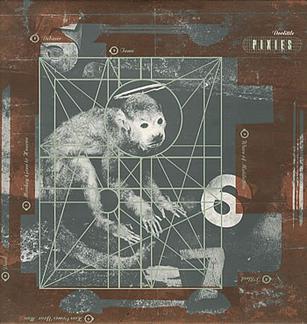 Pioneering the quiet-verse/loud-chorus song structure that would later appear in Kurt Cobain's head (especially in songs like "Wave Of Mutilation" and "There Goes My Gun"), effortless mixing punk weirdness ("Debaser") and pop loveliness ("Here Comes Your Man").
Pioneering the quiet-verse/loud-chorus song structure that would later appear in Kurt Cobain's head (especially in songs like "Wave Of Mutilation" and "There Goes My Gun"), effortless mixing punk weirdness ("Debaser") and pop loveliness ("Here Comes Your Man").The Police: Synchronicity
(A&M, 1983)
The Police went out on top for their final release, in a rare album that mixes technical sophistication with audience accessibility; of course, being powered by hits like "Wrapped Around Your Finger," "King Of Pain," and "Every Breath You Take" didn't hurt either.
Prince: Purple Rain
(Warner Brothers, 1984)
The Purple One at the peak of his talent and popularity in instant-classics such as "When Doves Cry" and "Let's Go Crazy," turned funk into confession and sex into love; a pop/rock/R&B "Song Of Myself" that would've even made Whitman blush.
Prince: Sign 'O' The Times
(Warner Brothers, 1987)
Prince's finest hour. Effortlessly mixing rock, R&B, funk, and psychedelic across a double-record set, he set his ego free and let the music speak for itself; the results, like "U Got The Look," are as good as his music gets--which is to say as good as rock music gets.
The Pretenders: The Pretenders
(Real, 1980)
Akron, Ohio ex-pat Chrissie Hynde goes overseas to London and forms a band that bridges the gap between The Kinks and The Clash, throwing in just enough pop that "Brass In Pocket" could become a major hit—in a sound they would soon call new wave.
Public Enemy: It Takes A Nation Of Millions To Hold Us Back
(Def Jam, 1988)
Chuck D brought a newfound sense of politics to songs like "Bring The Noise" and "Don't Believe The Hype," which was met by Terminator X's beats and offset by Flava Flav's cold lampin'—the result was the Sgt. Pepper of rap: the genre's "official" greatest album.
R.E.M.: Murmur
(I.R.S., 1983)
Indie rock first crystalizes as "college rock" in R.E.M.'s cryptic debut, as jingle-jangle guitars obscured the mumbled lyrics of tunes like "Radio Free Europe" and "Talk About The Passion"; it was part southern gothic, part postmodern electric, and all very, very weird.
R.E.M.: Automatic For The People
(Warner Brothers, 1992)
Almost ten years after Murmur, R.E.M. releases a mostly quiet, understated collection of songs—such as "Everybody Hurts," "Man On The Moon," and "Nightswimming"—that are as murky as the swamp but elegant enough for AM radio; their finest album.
The Replacements: Tim
(Sire, 1985)
Forced to make a video for their major-label debut lead single "Bastards Of The Young," Paul Westerberg & co. delivered a clip of a speaker blaring the song; the rest of the LP followed suit, as rockers like "Left Of The Dial" pioneered '80s alternative rock.
Run-D.M.C.: Raising Hell
(Warner Brothers, 1992)
Almost ten years after Murmur, R.E.M. releases a mostly quiet, understated collection of songs—such as "Everybody Hurts," "Man On The Moon," and "Nightswimming"—that are as murky as the swamp but elegant enough for AM radio; their finest album.
The Replacements: Tim
(Sire, 1985)
Forced to make a video for their major-label debut lead single "Bastards Of The Young," Paul Westerberg & co. delivered a clip of a speaker blaring the song; the rest of the LP followed suit, as rockers like "Left Of The Dial" pioneered '80s alternative rock.
Run-D.M.C.: Raising Hell
(Profile, 1986)
After Run-D.M.C.'s hit with Aerosmith on "Walk This Way" broke down the wall between rap and rock (literally, in the video), they followed up with a classic LP of street rhymes ("My Adidas"), social rhymes ("Proud To Be Black"), and nursery rhymes ("Peter Piper").
Paul Simon: Graceland
(Warner Brothers, 1986)
 Paul Simon invokes Elvis, goes to South Africa, and makes a pop/cajun/zydeco mash-up, but it was the with Ladysmith Black Mambazo collaborations like "Diamonds On The Soles Of Her Shoes" that got all the attention—and brought world music close to home.
Paul Simon invokes Elvis, goes to South Africa, and makes a pop/cajun/zydeco mash-up, but it was the with Ladysmith Black Mambazo collaborations like "Diamonds On The Soles Of Her Shoes" that got all the attention—and brought world music close to home.The Smiths: The Queen Is Dead
(Rough Trade, 1986)
The definitive UK indie band of the 1980s crafts the decade's finest rock album, as Morrissey croons songs about death ("I Know It's Over"), love ("The Boy With The Thorn In His Side"), and death to measure love ("There Is A Light That Never Goes Out.")
Sonic Youth: Daydream Nation
(Enigma, 1988)
With "Teenage Riot" kicking it off and the extended "Trilogy" as its finale, Sonic Youth's masterpiece mixed rock, punk, and avant-garde to create a sonic vocabulary that would be used by nearly every major group that came since—almost all of whom they then outlasted.
Talking Heads: Remain In Light
(Sire, 1980)
The artiest band of the New York punk scene took on the world with this LP, building a sound on tape loops of polyrhythmic African music; the result was an innovative record with a hit single, "Once In A Lifetime"—and archetypal video—to match.
Tina Turner: Private Dancer
(Capitol, 1984)
One of the most unprecedented (and unexpected) comebacks in rock history by one of the music's true survivors; she took songs like "What's Love Got To Do With It" and "Better Be Good To Me" and transformed them from hot pop into cool personal testimony.
U2: The Joshua Tree
(Sire, 1980)
The artiest band of the New York punk scene took on the world with this LP, building a sound on tape loops of polyrhythmic African music; the result was an innovative record with a hit single, "Once In A Lifetime"—and archetypal video—to match.
Tina Turner: Private Dancer
(Capitol, 1984)
One of the most unprecedented (and unexpected) comebacks in rock history by one of the music's true survivors; she took songs like "What's Love Got To Do With It" and "Better Be Good To Me" and transformed them from hot pop into cool personal testimony.
U2: The Joshua Tree
(Island, 1987)
Outside is America, as the group crafted a sound that was nearly as big as the land they sought to conquer; songs like "Where The Streets Have No Name" or "With Or Without You" grasped for a terrain so wide-open, it could only be found in one's imagination.
U2: Achtung Baby
(Island, 1991)
 With this album, Bono went into his ironic biggest-rockstar-in-the-world shtick with rockers like "Even Better Than The Real Thing" and "Mysterious Ways," but best of all was "One"—a song about the limits of loyalty that literally saved the band from breaking up.
With this album, Bono went into his ironic biggest-rockstar-in-the-world shtick with rockers like "Even Better Than The Real Thing" and "Mysterious Ways," but best of all was "One"—a song about the limits of loyalty that literally saved the band from breaking up.Van Halen: 1984
(Island, 1984)
With hits like "Jump," "Panama," and "Hot For Teacher," this record was either the best thing to happen to pop or the worst thing to happen to heavy metal—as if the two were mutually exclusive; Eddie Van Halen's opening title track alone launched a thousand shredders.
X: Los Angeles
(Slash, 1980)
 The best album by L.A.'s definitive punk rock band; songs like "You're Phone's Off The Hook, But You're Not" and "Johnny Hit And Run Pauline" gave a down-and-dirty tour of the L.A. streets, filled with dope fiends, rapists, and the idle rich.
The best album by L.A.'s definitive punk rock band; songs like "You're Phone's Off The Hook, But You're Not" and "Johnny Hit And Run Pauline" gave a down-and-dirty tour of the L.A. streets, filled with dope fiends, rapists, and the idle rich.The 1990s.
Beck: Odelay
(DGC, 1996)
 Mark Twain's deadpan humor, as swallowed by William Burroughs and given two turntables and a microphone; songs like "Where It's At" and "Devil's Haircut" were as weird and accomplished as Dylan's Basement Tapes—& you could dance to it, too.
Mark Twain's deadpan humor, as swallowed by William Burroughs and given two turntables and a microphone; songs like "Where It's At" and "Devil's Haircut" were as weird and accomplished as Dylan's Basement Tapes—& you could dance to it, too.Bjork: Debut
(One Little Indian, 1993)
 "If you ever get close to a human..." Bjork warns in the opening "Human Behavior," "Be ready to get confused," and the rest of the album validates this, as her slippery voice sang over shifting sounds and textures in a way that was strange, profound—and very sexy.
"If you ever get close to a human..." Bjork warns in the opening "Human Behavior," "Be ready to get confused," and the rest of the album validates this, as her slippery voice sang over shifting sounds and textures in a way that was strange, profound—and very sexy.Jeff Buckley: Grace
(Columbia, 1994)
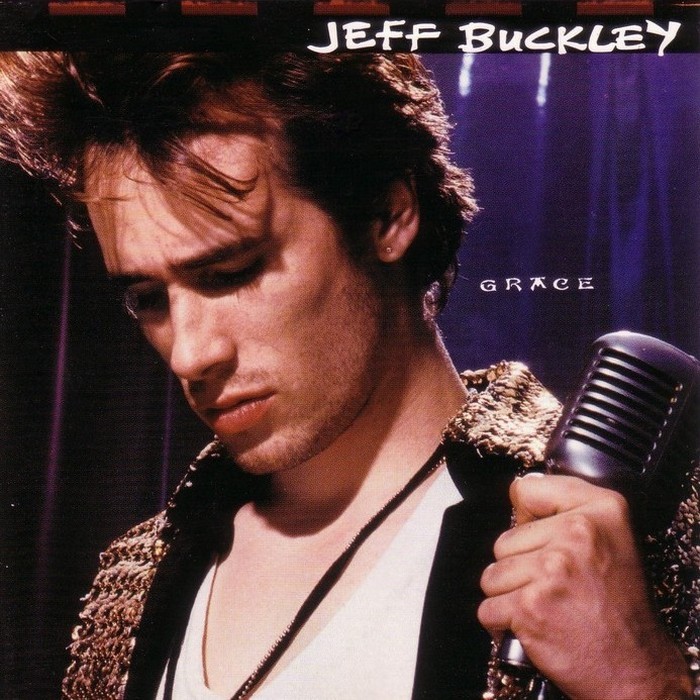 On the only studio album released in his lifetime, Buckley effortlessly wove together shades of Billie Holiday, Bob Dylan, and Led Zeppelin; "Mojo Pin" and "Last Goodbye" were stunners, but it was his sparse cover of Leonard Cohen's "Hallelujah" that stole the show.
On the only studio album released in his lifetime, Buckley effortlessly wove together shades of Billie Holiday, Bob Dylan, and Led Zeppelin; "Mojo Pin" and "Last Goodbye" were stunners, but it was his sparse cover of Leonard Cohen's "Hallelujah" that stole the show.Dr. Dre: The Chronic
(Death Row, 1992)
On the definitive rap album of the 1990s, Dr. Dre
steps out from behind the producer's desk, shares the mic with a then-unknown
Snoop Doggy Dogg, and in hits like "Nuthin' But A G Thang" and
"Dre Day," creates gangsta rap's first modern masterpiece.
Lauryn Hill: The Miseducation Of
(Ruffhouse, 1998)
Ex-Fugee Lauryn Hill went to Tuff Gong in Jamaica and recorded an album that encompassed the entire stretch of modern black music from pop to rock to reggae to hip-hop (and back); and with her own #1 hit, "Doo Wop (That Thing)," she even added to the history herself.
Moby: Play
(V2, 1999)
Copping his name from his great-great-great-granduncle Herman Melville's masterpiece, Moby creates his own epic American voyage by continuing Alan Lomax's 1959 field recording trip down south, and breathing new life into hollers like "Natural Blues."
My Bloody Valentine: Loveless
(Creation, 1991)
 One version of postmodernism in one of the most influential albums of the decade: Precious vocals awash in a sea of feedback-laden guitars; songs like "When You Sleep" and "Only Shallow" were not only weird and etherial—they were beautiful.
One version of postmodernism in one of the most influential albums of the decade: Precious vocals awash in a sea of feedback-laden guitars; songs like "When You Sleep" and "Only Shallow" were not only weird and etherial—they were beautiful.Nas: Illmatic
(Columbia, 1994)
With the release this solo deubt, Nas all but single-handedly revived East Coast hip-hop and established himself as the scene's greatest MC since Rakim; "I'm out for presidents to represent me," he raps in "The World Is Yours," and with this album, he's earned it.
Neutral Milk Hotel: In The Aeroplane Over The Sea
(Merge, 1998)
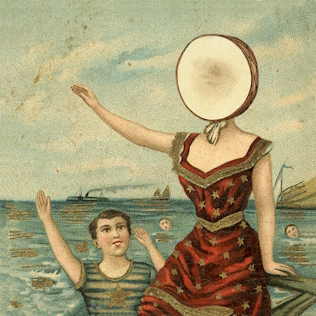 A love letter to Anne Frank, built around acoustic guitars, funeral brass, and biolab lust; but in songs like "The King Of Carrot Flowers, Part 1-3," "Two-Headed Boy," and the title track, it was some of the most intense—and beautiful—rock songs ever recorded.
A love letter to Anne Frank, built around acoustic guitars, funeral brass, and biolab lust; but in songs like "The King Of Carrot Flowers, Part 1-3," "Two-Headed Boy," and the title track, it was some of the most intense—and beautiful—rock songs ever recorded.Nine Inch Nails: The Downward Spiral
(Nothing, 1994)
Equal parts rocking, beautiful, and haunting, songs
like "Closer" and "March Of The Pigs" helped put industrial
at the forefront of rock, but it was Johnny Cash's surprise cover of
"Hurt" that proved this wasn't just great postmodern music—it was
great American music.
Nirvana: Nevermind
(DGC, 1991)
A loud Seattle trio led by a loser who used to live under a bridge finally break punk (now called grunge) in one of the finest albums in rock history: "Smells Like Teen Spirit" was the anthem, "In Bloom" was the mindset, and "Come As You Are" was the password.
Nirvana: In Utero
(DGC, 1993)
Nirvana teams with dream producer Steve Albini to produce their most accomplished studio album; songs like "Heart-Shaped Box," "Pennyroyal Tea," and "Dumb" took the music beyond Nevermind—even a song as polarizing as "Rape Me" sounded monumental.
Nirvana: MTV Unplugged In New York
(DGC, 1994)
A map to another version their music could have taken; songs like "About A Girl" and "All Apologies" were reborn and reclaimed, but it was their take on the haunting folktale "In The Pines" that would've even made Lead Belly sit up in his grave and shiver.
Notorious B.I.G.: Ready To Die
(Bad Boy 1994)
The most legendary voice in East Coast hip-hop used his only studio album released in his lifetime to tell his story—he meditated ("Things Done Changed"), took what he wanted ("Gimme The Loot"), lived large ("Juicy"), and predicted his own early death ("Suicidal Thoughts").
Pearl Jam: Ten
(Bad Boy 1994)
The most legendary voice in East Coast hip-hop used his only studio album released in his lifetime to tell his story—he meditated ("Things Done Changed"), took what he wanted ("Gimme The Loot"), lived large ("Juicy"), and predicted his own early death ("Suicidal Thoughts").
Pearl Jam: Ten
(Epic, 1991)
The Stones to Nirvana's Beatles, Pearl Jam focused on their hard rock
craft until they outlasted virtually everyone else; early classics like
"Alive" and "Evenflow" set the course for their music, but
it was the stunning "Jeremy" that predicted the Columbine
shootings.
Radiohead: OK Computer
(Parlophone, 1997)
Radiohead: Kid A
(Parlophone, 2000)
 The birth of the 21st Century in an uncompromised soundscape of strings, brass, and electronics--no singles were released (although "Everything In Its Right Place" could've been), but they weren't needed; the album hit #1 and set a gold standard for the new millennium.
The birth of the 21st Century in an uncompromised soundscape of strings, brass, and electronics--no singles were released (although "Everything In Its Right Place" could've been), but they weren't needed; the album hit #1 and set a gold standard for the new millennium.
The Red Hot Chili Peppers: Blood Sugar Sex Magik
(Parlophone, 2000)
 The birth of the 21st Century in an uncompromised soundscape of strings, brass, and electronics--no singles were released (although "Everything In Its Right Place" could've been), but they weren't needed; the album hit #1 and set a gold standard for the new millennium.
The birth of the 21st Century in an uncompromised soundscape of strings, brass, and electronics--no singles were released (although "Everything In Its Right Place" could've been), but they weren't needed; the album hit #1 and set a gold standard for the new millennium.The Red Hot Chili Peppers: Blood Sugar Sex Magik
(Warner Brothers, 1991)
The Chili Peppers' major-label debut is an open mix of alternative, funk, and rap that tested the music's boundaries and found few; includes "Give It Away," their greatest song, "Under the Bridge," their most overplayed, and "Breaking The Girl," their most underrated.
Smashing Pumpkins: Siamese Dream
(Virgin, 1993)
Determined to make the best album since Nevermind, Pumpkins leader Billy Corgan delivered a disc behind schedule and over budget, but the results were clear: Rockers like "Today" and ballads like "Disarm" inspired thousands to pick up guitars and learn their riffs.
The Stone Roses: The Stone Roses
(Silvertown, 1989)
Although often little more than an alternative rock footnote here, The Stone Roses' debut was a sensation in England, setting the way for Oasis, Blur, and several hundred other bands in songs like "Elephant Stone," "I Wanna Be Adored" and "I Am The Resurrection."
A Tribe Called Quest: The Low-End Theory
(Jive, 1991)
If De La Soul first put a more laid-back hip-hop style on the map, Tribe MC Q-Tip perfected it; in songs like "Excursions," "Rap Promoter," and "Check The Rhime," the group rapped over chill jazz riffs in music that was smart, sly—and often quite funny.
2pac: Me Against The World
(Jive, 1991)
If De La Soul first put a more laid-back hip-hop style on the map, Tribe MC Q-Tip perfected it; in songs like "Excursions," "Rap Promoter," and "Check The Rhime," the group rapped over chill jazz riffs in music that was smart, sly—and often quite funny.
2pac: Me Against The World
(Jive, 1995)
The Portrait Of The Artist As A Young Thug, by a West Coast hip-hop martyr with a poet's eye and a hustler's game who made his legend on songs like "If I Die 2Nite," and "Dear Mama"—the latter of which is one of the few rap songs in the National Recording Registry.
The 2000s.
Arcade Fire: Funeral
(Merge, 2004)
A Canadian husband-and-wife-led sextet quietly save rock by grafting new wave grooves to beautiful melodies; "Neighborhood #1 (Tunnels)" finds epic angst inside of domestic drama, while "Neighborhood #3 (Power Out)" may be the best song The Talking Heads never cut.
Eminem: The Marshall Mathers LP
(Aftermath, 2000)
What if the smartest person in America was also the angriest? Eminem's second album provided an answer, as "The Real Slim Shady" and "Stan" spewed a fire bitterness and ridicule, while proving him to be one of the finest (and funniest) MCs to pick up a mic.
Green Day: American Idiot
(Reprise, 2004)
The most durable punk band of the era lose their masters, reinvent the rock opera, and release their masterpiece, as songs like the title track and "Boulevard Of Broken Dreams" matched The Who's vision with The Clash's sound; no wonder it was showered with awards.
Jay-Z: The Blueprint
(Roc-A-Fella, 2001)
Released on September 11, 2001, when Jay-Z's hometown was facing its darkest day, this album—his sixth in six years—established him as the city's new music king, as he blows away pretenders with hits like "Jigga That Nigga" and the instant-classic "Izzo (H.O.V.A.)."
The Strokes: Is This It
(RCA, 2001)
The great white hype and momentary saviors of rock, they took everything good about New Wave, mixed it with The Velvet Underground, and sang it through a megaphone; "Last Night" was the anthem, but "Someday" is one of the prettiest songs I ever heard.
Kanye West: The College Dropout
(Rock-A-Fella, 2004)
Arguably the finest MC of the new millennium, Kanye may not be all things to all people, but he's certainly all things to himself (and critics); he hit the ground running on this debut with hits like "Slow Jamz" and "All Falls Down" that actually delivered on the hype.
The White Stripes: Elephant
(V2, 2003)
The guitar-&-drums garage rock revivalists' major-label debut, chockful of new sounds (a bass on "Seven Nation Army"!) and old driving rock (the masterful "Hypnotize"); with Beatles-like psychedelic flourishes and Burt Bacharach tunes thrown in, in equal measure (and volume).
Wilco: Yankee Hotel Foxtrot
(Nonesuch, 2002)
Abandoned by their label, Wilco streamed this for free until it was picked up by Nonesuch—the result was a critical smash and their best-selling album to date, as "I'm The Man Who Loves You" proves that the blues can still be shaped into something wholly exciting.
* * *
*1950s Substitutions: Chuck Berry: The Definitive Collection; Bo Diddley: His Best: The Chess 50th Anniversary Collection; Fats Domino: Walking To New Orleans: Greatest Hits; Buddy Holly: Greatest Hits [1996]; Jerry Lee Lewis: 18 Original Sun Greatest Hits; Little Richard: The Very Best Of; Elvis Presley: At Sun; Elvis Presley: ELV1S: 30 #1 HITS.
**1960s Substitutions: The Beach Boys: Sounds Of Summer; The Beatles: 1; The Kinks: The Singles Collection; Roy Orbison: 16 Biggest Hits; Phil Spector: The Essential Phil Spector; The Who: My Generation: The Best Of.






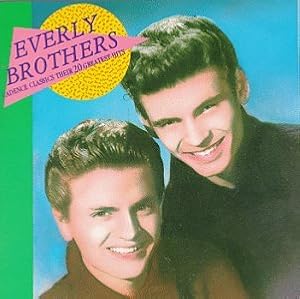
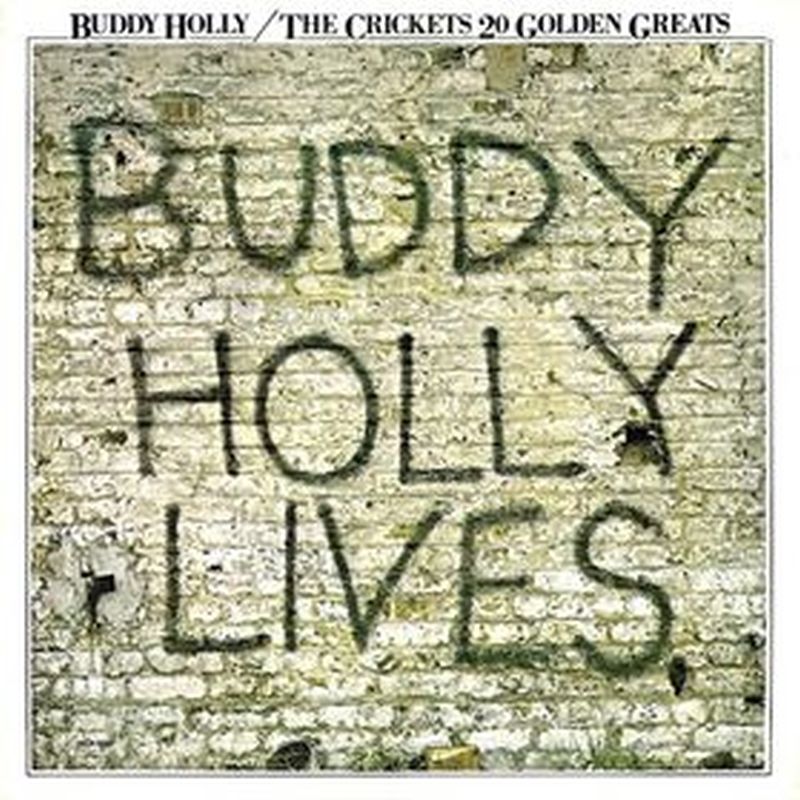
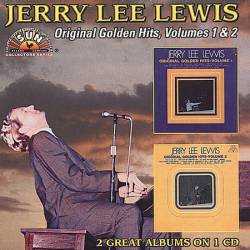
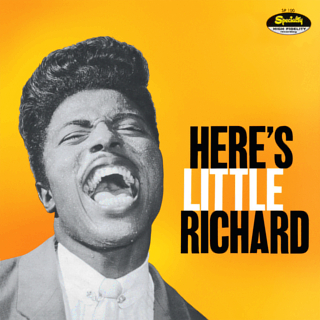









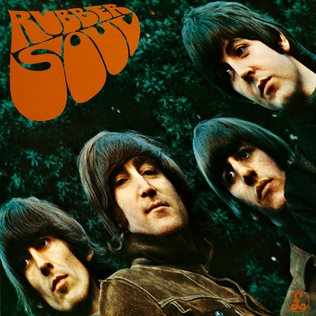

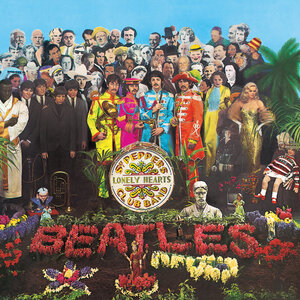
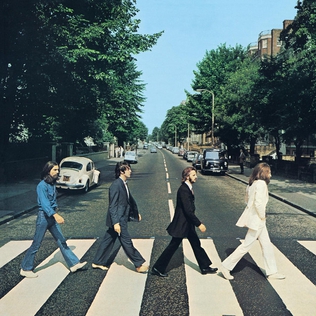
.jpg)



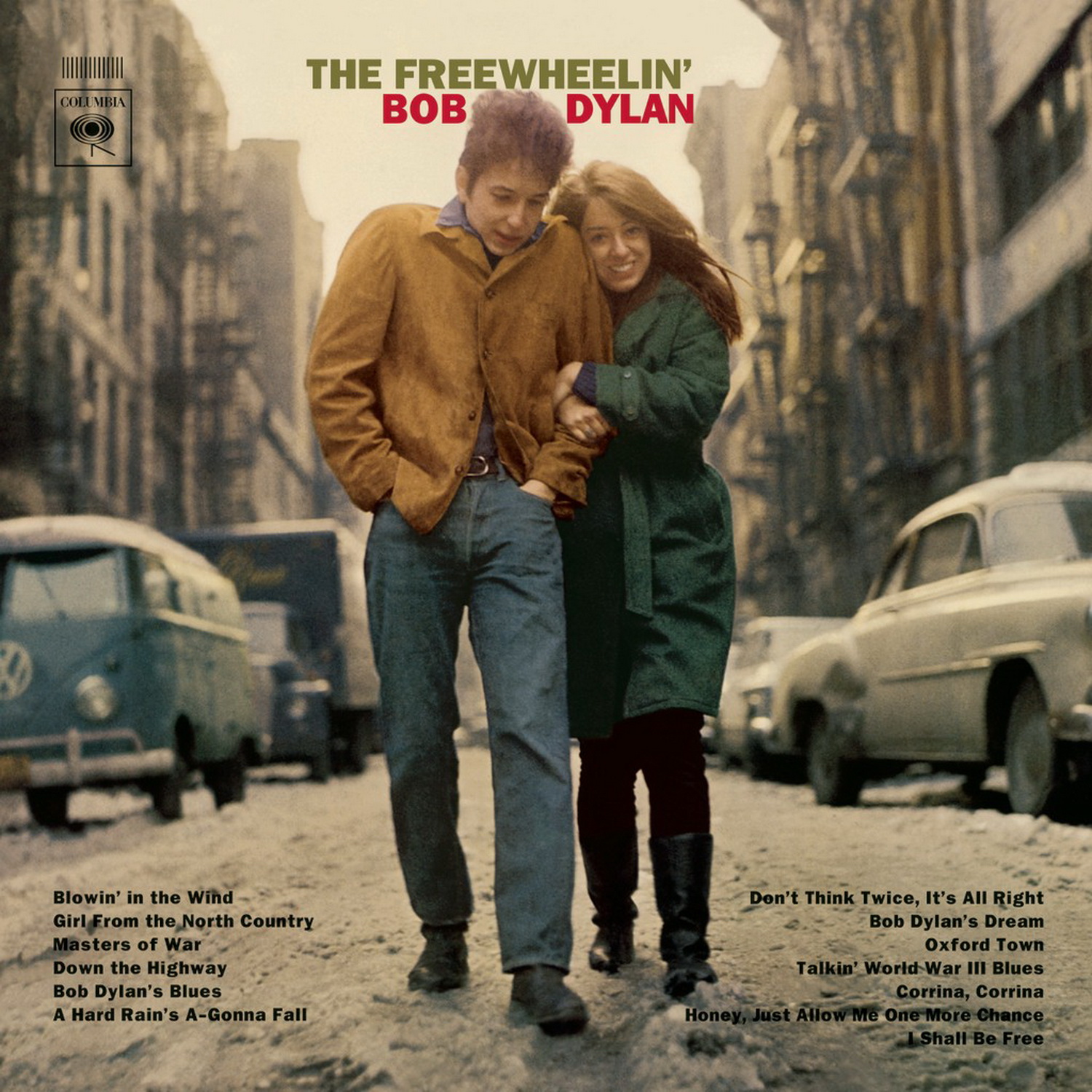









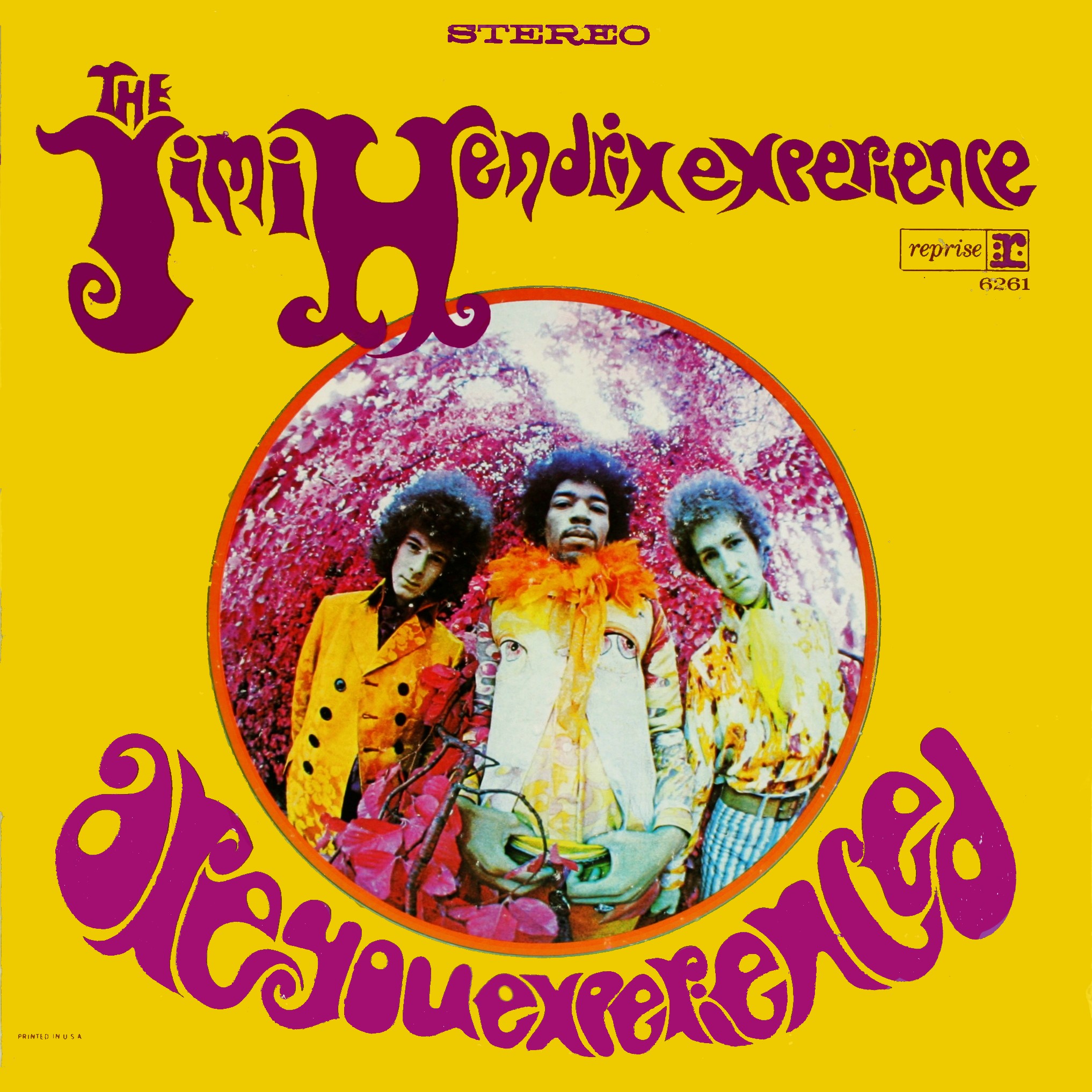
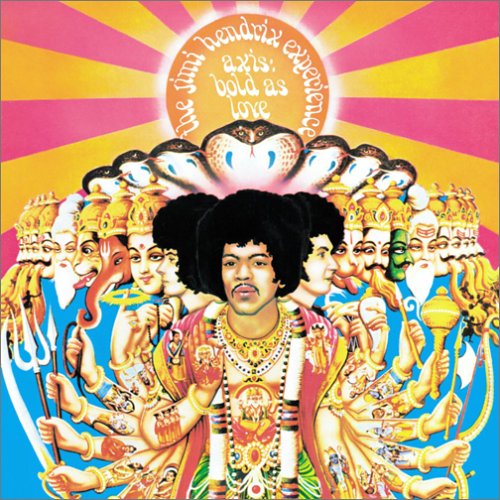


















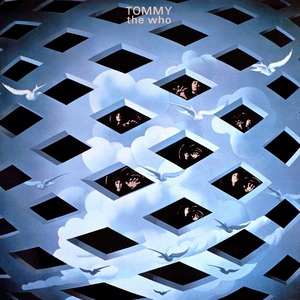



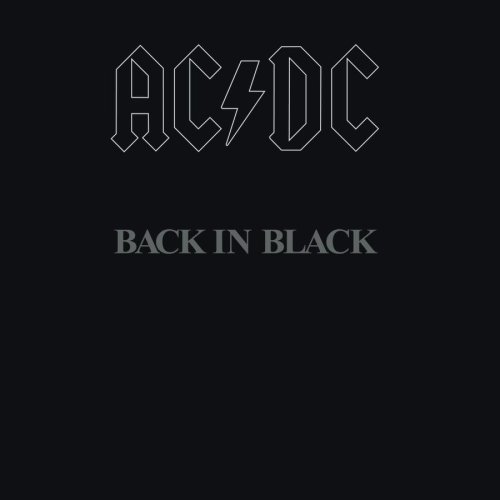


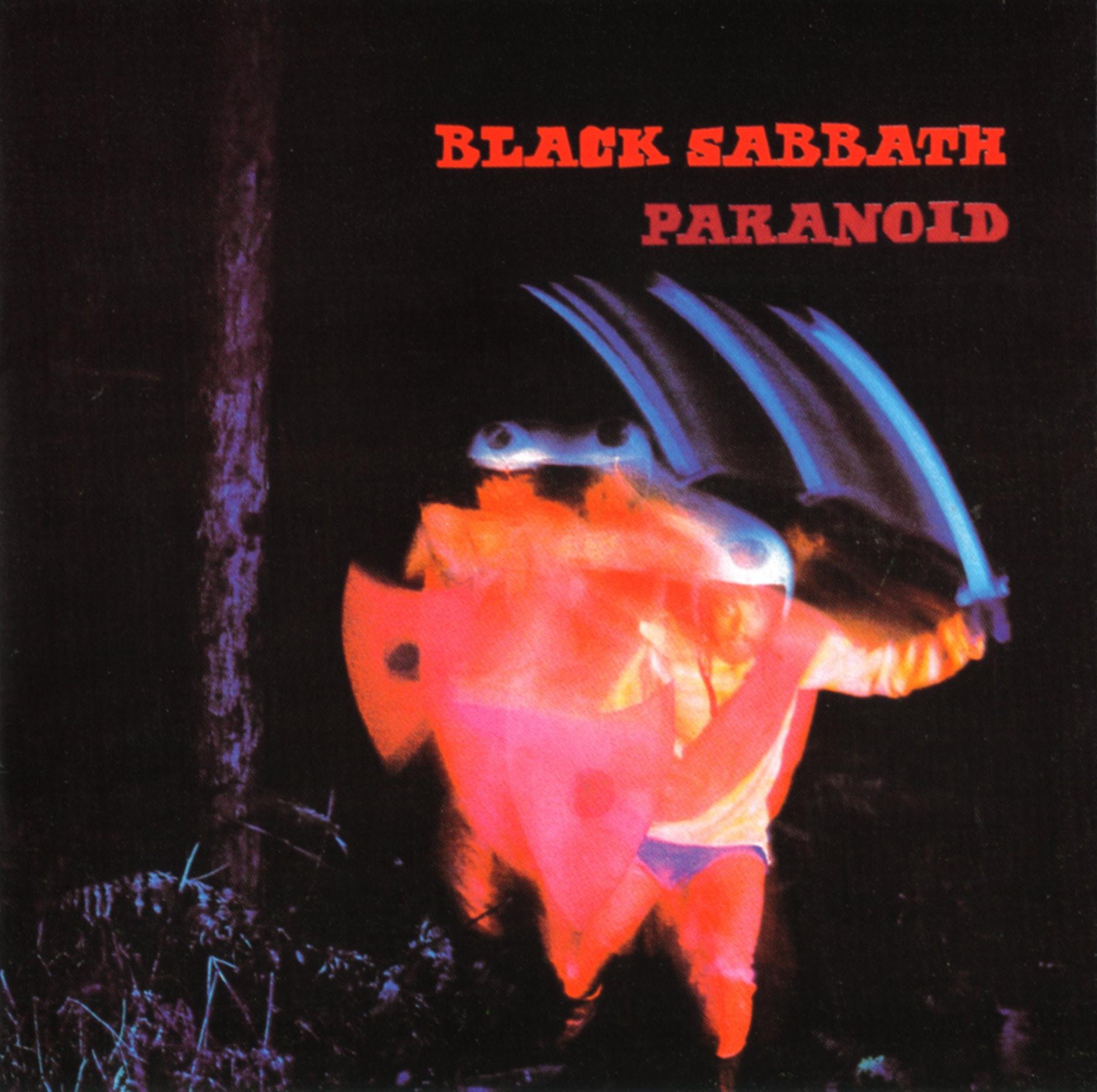

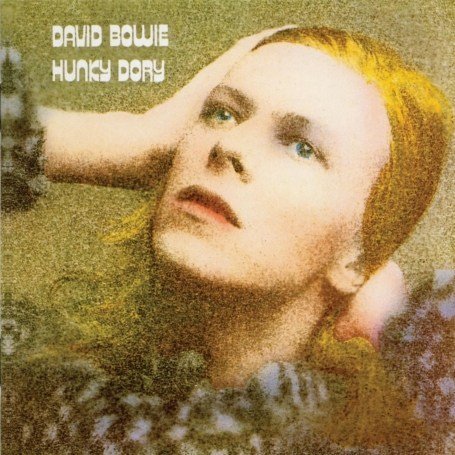
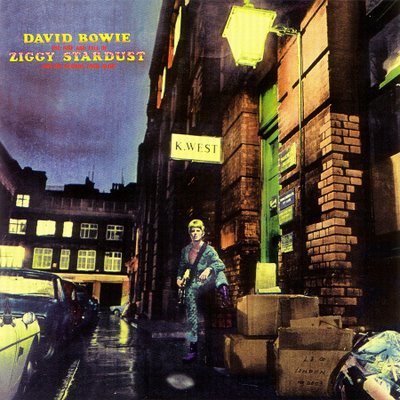











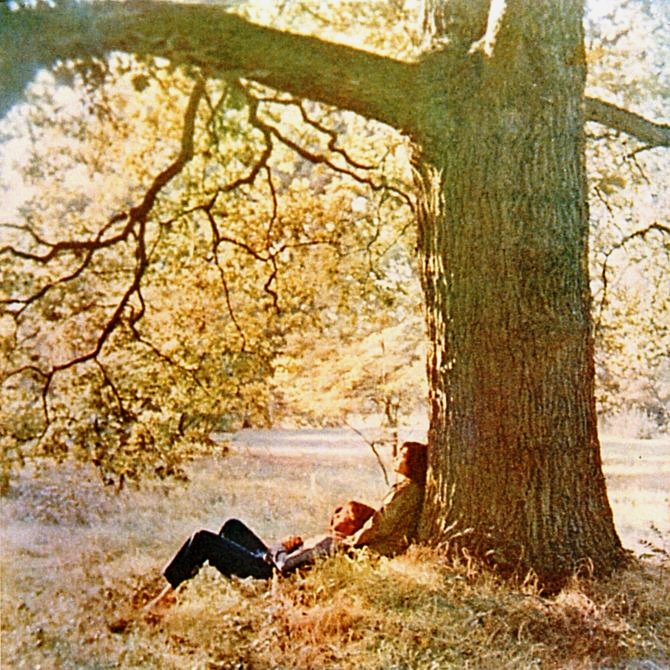


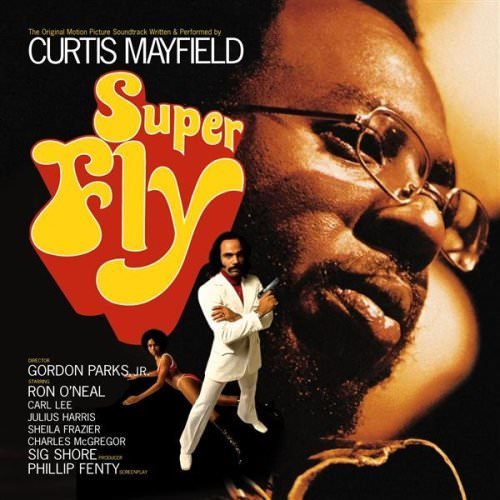
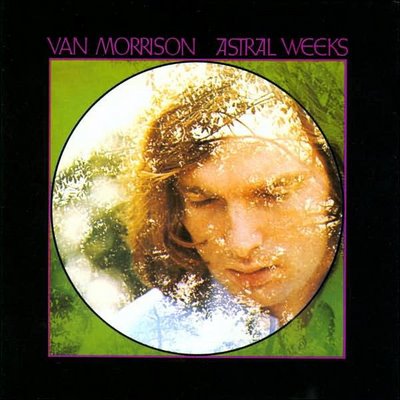


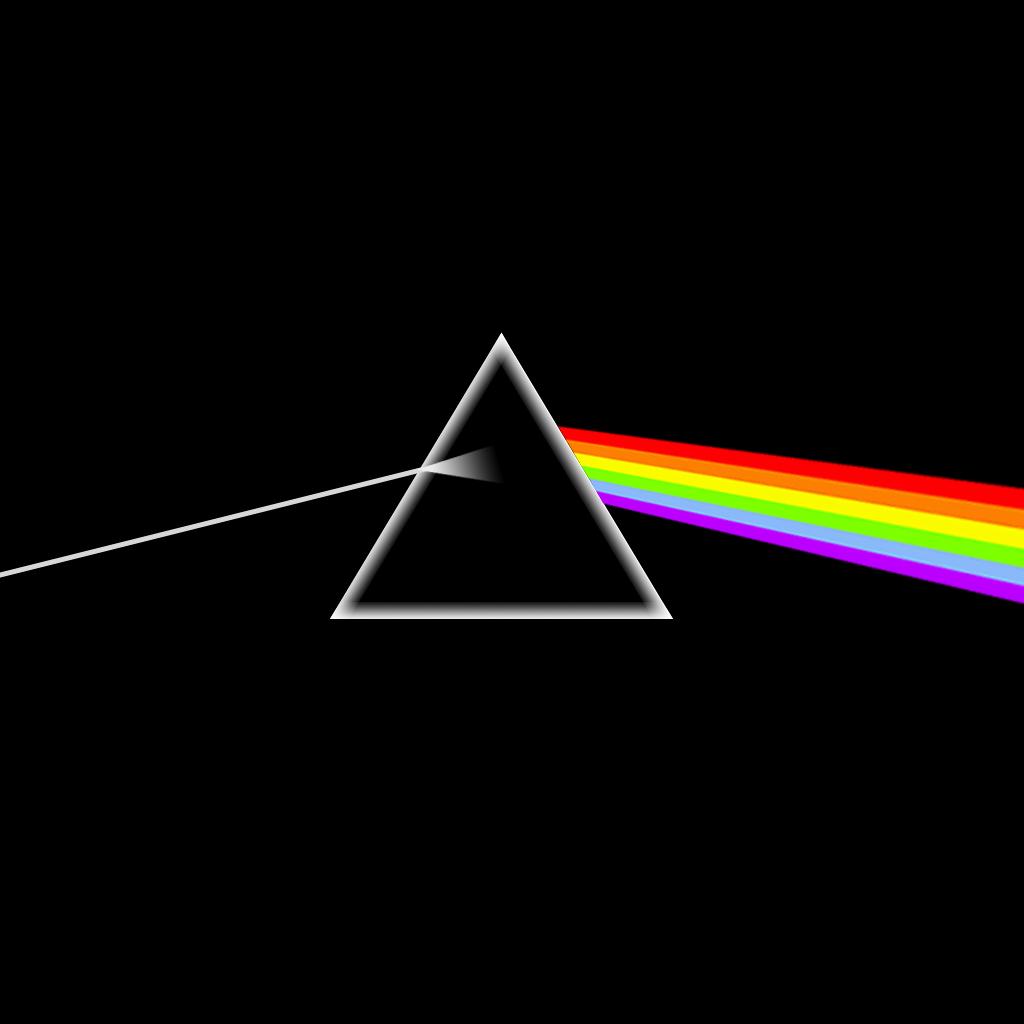
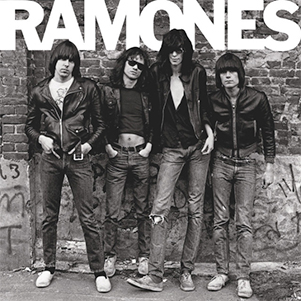







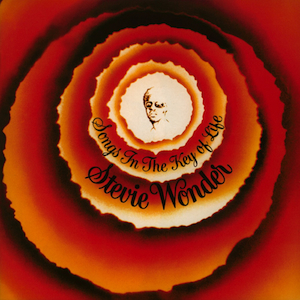

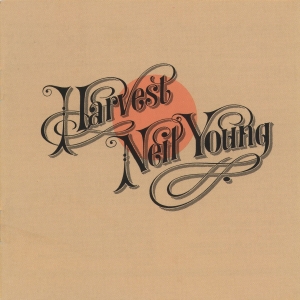



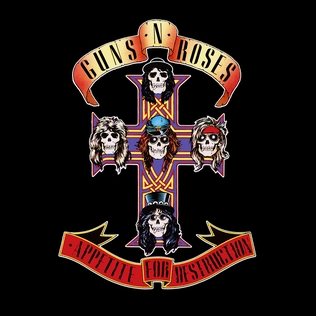
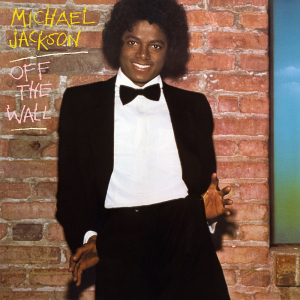




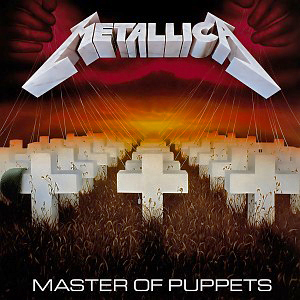

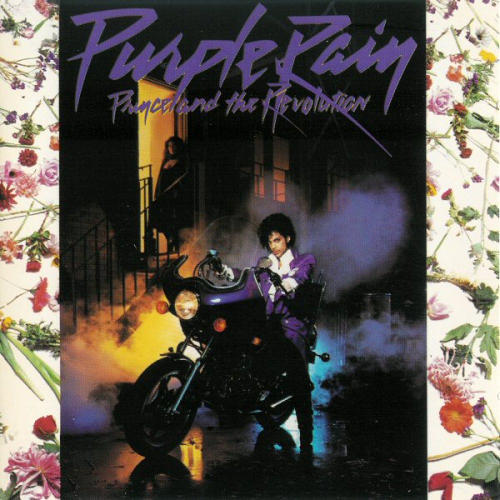

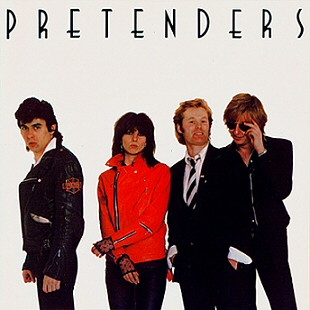
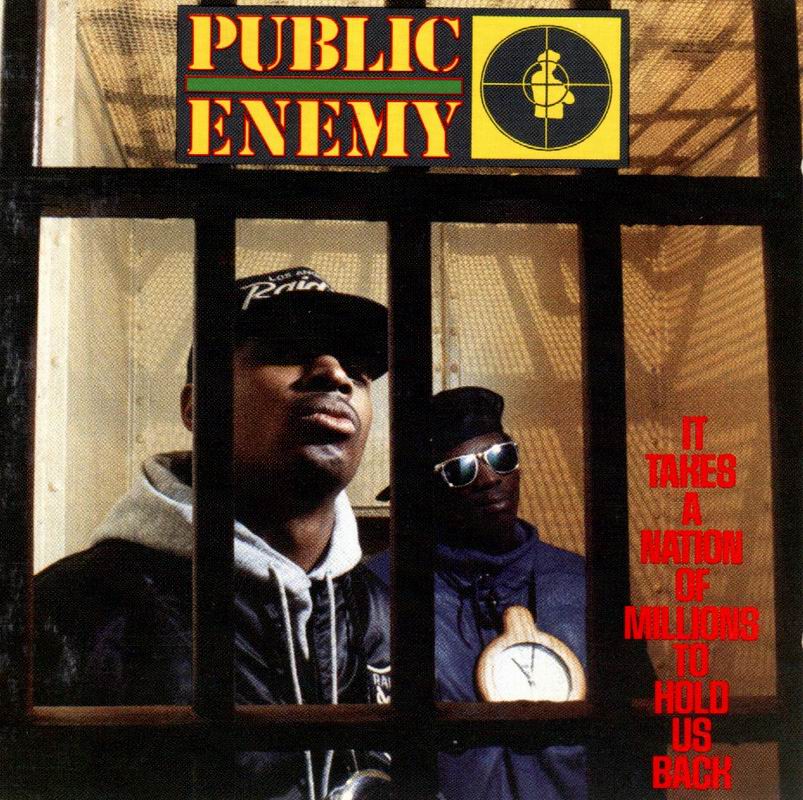
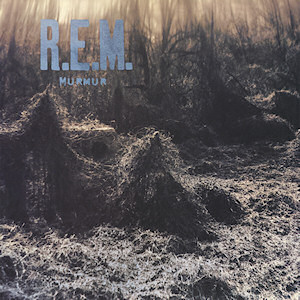

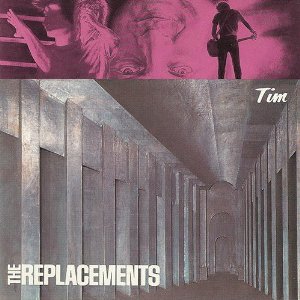
.jpg/220px-Raising_Hell_(Run_DMC_album_-_cover_art).jpg)







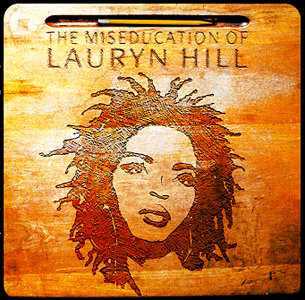

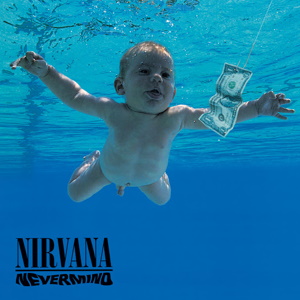
_album_cover.jpg)
